Karen Toews
Scripting Vibrant Living Beyond An Empty Nest
Rescripting Life With The Pain

In January I wrote Life Disrupted: My Season of Wintering and never imagined that here in May, my life and physical activities would still be so restricted by pain. A short reprieve in February gave me an injection of hope – thank you! – and then the pain came back full steam. So did the pendulum swing of positive expectation and helplessness.
I’ve written snippets elsewhere about the Enneagram. Ian Morgan Cron and Suzanne Stabile’s book The Road Back to You has been helpful in my self-discovery for learning how I’m wired. I don’t program my life to following their description of a type Seven – “The Enthusiast” – but I resonate with many of the identifying factors that includes both strengths and self-defeating patterns.
Rescripting (trying to make sense of) my present season has been a collaborative practice of this evolving understanding of who I am and scripture and prayer with journalling my highs and lows (with the accompanying emotions, these words are for my eyes alone!).

My new normal is a hot morning bath. A couple weeks ago I laid back, planted my feet on the tiles on either side of the taps, and talked to my legs.
“I don’t appreciate what you’re up to – particularly you there on the right! Yet as I look at you I know you’re still strong, you look fine and I’m grateful for you.”
I thanked them for all the tasks of life they’ve helped me do: running upstairs to fetch laundry, mowing my lawn, trundling the green compost cart to the road every other Monday. For all the places they’ve taken me: hikes in the backwoods and trails I’ve shared with friends and family, the sights I’ve viewed and the hills I’ve climbed on my bike, launching and portaging the kayak to reach my happy place on the water.
“Oh yeah, I’m aware you’ve lost some tone and strength, and you’re probably frustrated also by so much sitting and laying around. But please hold the muscle memory, I’m counting on you for when I get into action again.”
Adding more hot water and essential oils to the bath, I continued the impromptu gratitude-body scan session.
“I can’t see you heart and lungs but your faithfulness is relentless – to the extreme, helping me conquer marathons and mountains. Thank you. Stay alert for more adventures.”
I thanked my eyes: to soak in the view of the river beyond my living room, to read words of many books (check out my list in the postscript), to see and connect with friends on my computer monitor. I gave a shout-out to my ears, to hear and commune with an owl’s melancholic tones and the wind shuffling in the woods behind my house.
Finally, I went deeper and thanked my genes. Mom and Dad – who as children immigrated to Canada with their parents – gave me resilience, spirit, courage. Gifts that endure though they have passed on.

“Mom, you had your share of suffering. Headaches, arthritis – painful frustrations that hindered you from keeping up to speed with your ambition. Thank you for modelling how not to give up.”
“Dad, many years before I was a gleam in anyone’s eye, your first wife died unexpectedly, leaving you in shock and heart-broken with three small sons to raise. Thank you for choosing life. And for choosing Mom, so a sister and I could become part of a precious blended family. I still draw strength from your deep well, and from what you taught, by living a life of rock-solid faith and trust in God.”
I release the plug to drain the water and finish up with a two to three minute cold shower to boost my immune system and a kickstart to feel fully alive. (A newbie to this practice, I was happy to share a cold-water ocean dip with my daughter Renee on her recent visit to Nova Scotia.)
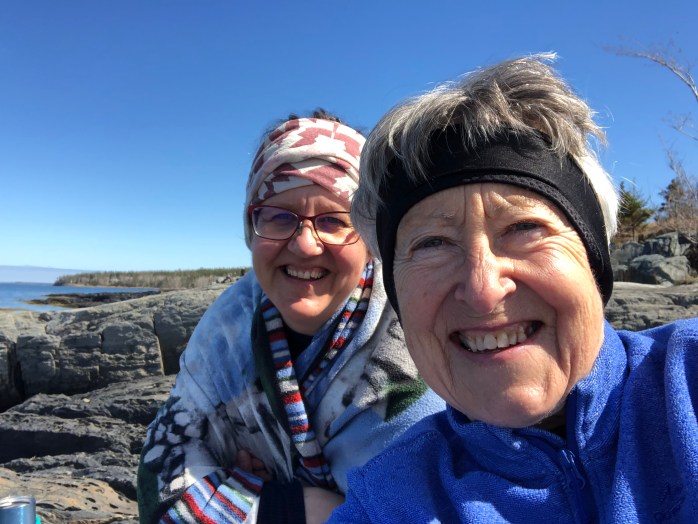
There’s a knock on the bathroom door.
“Dear, do you want me to bring you a coffee?”
“Thanks, but I’m just stepping out of the tub, and will enjoy that coffee in a few minutes.”
My husband – bless him – consistently offers to turn on the bathroom wall heater, light a stick of incense or white sage: one morning even balanced a small fruit plate on the edge of the tub! I can’t imagine life without his love and positive, enduring support. xoxo
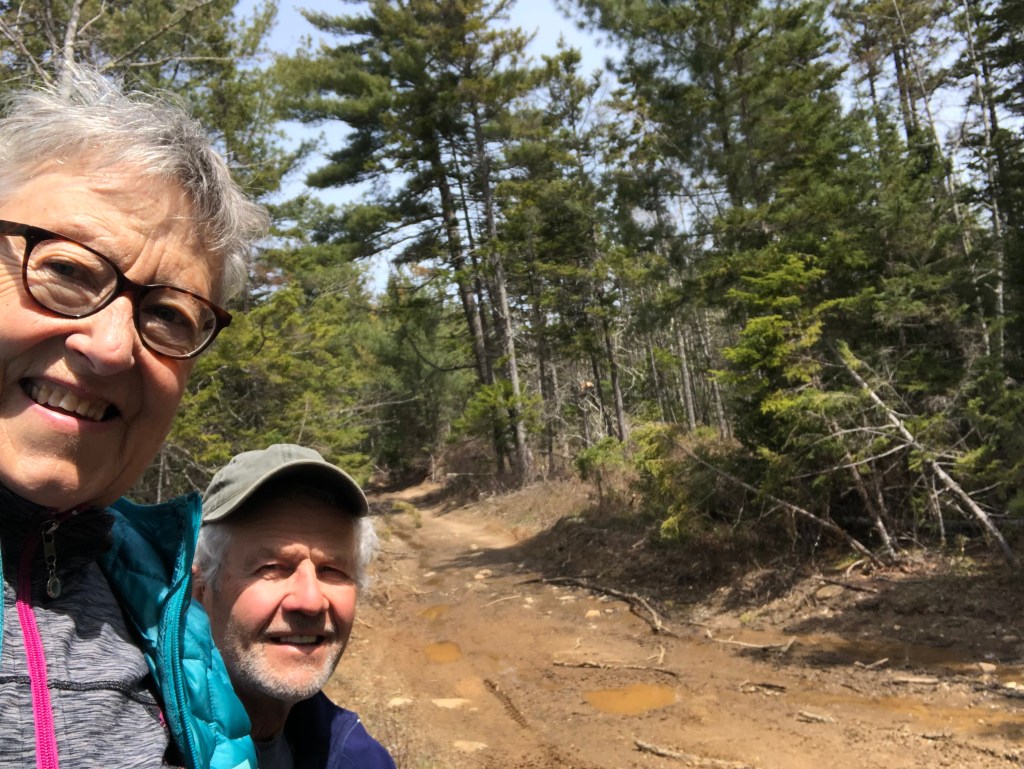
Life is wrapped up differently than what it was and what I want it to be; I sometimes do poorly at accepting each day as it comes. But when I choose to live from a place of gratitude I live a more peaceful, healthier story. It helps me believe, hope, expect that this current story will someday shift to another one less painful.
Dear friends, thank you for listening – that’s all I have to say. May you be well.
Love,
Karen
Books I’ve recently read or listened to on audio. Non-fiction: Stories of courage, adventure and challenges.
- What Comes Next and How to Like it – a Memoir – Abigail Thomas
- A Three Dog Life – a Memoir – Abigail Thomas
- And There Was Light: the Extraordinary Memoir of a Blind Hero of the French Revolutionary – Jacques Lusseyran
- Llama Drama: A 2-woman, 5500M cycling adventure through S.America- Anna McNuff
- The Pants of Perspective: One Woman’s 3,000K running adventure through the wilds of New Zealand – Anna McNuff
- With the End in Mind: Dying, Death, and Wisdom in an Age of Denial – Kathryn Mannix
- I Am, I Am, I Am: Seventeen Brushes with Death – Maggie O’Farrell
- The Girl Who Smiled Beads – Clemantine Wamariya and Elizabeth Well
- We are Not Refugees: The Stories of the Displaced – Gary Tiedemann
Poetry by Kay Gillen: Dancing Between The Raindrops
A Photo-Blog: What’s in a Flag
The Canadian national flag was inaugurated in a public ceremony on Parliament Hill, Ottawa on February 15, 1965. Before this, our national flag was the Union Jack and the Canadian Red Ensign flew from government buildings: both emblems attached to our British heritage. In 1963, (newly elected) Prime Minister Lester B. Pearson promised to resolve the proposal of a unique and distinctive national flag in time for Canada’s centennial celebrations in 1967.
Thank you to Mr. Pearson for accomplishing his mission, and for hoisting the new flag proclaiming these words: “May the land over which this flag flies, remain united in freedom and justice … sensitive, tolerant and compassionate towards all.”

As of the beginning of February 2022, my husband and I have been concerned and curious to see and sense for ourselves how our country’s freedom and justice is being supported and upheld at Parliament Hill in our country’s capital. We checked our schedules – and the weather forecast – and on February 10, 2022 we packed up warm outdoor clothes, several flags and we were off on a road trip to Ottawa.
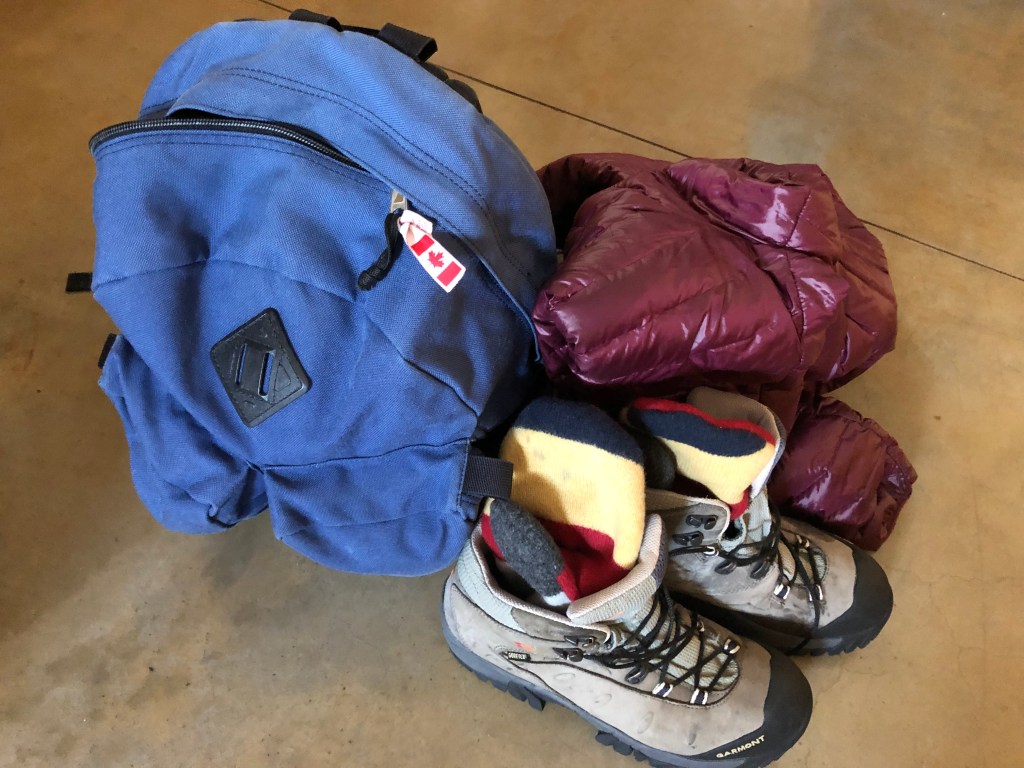
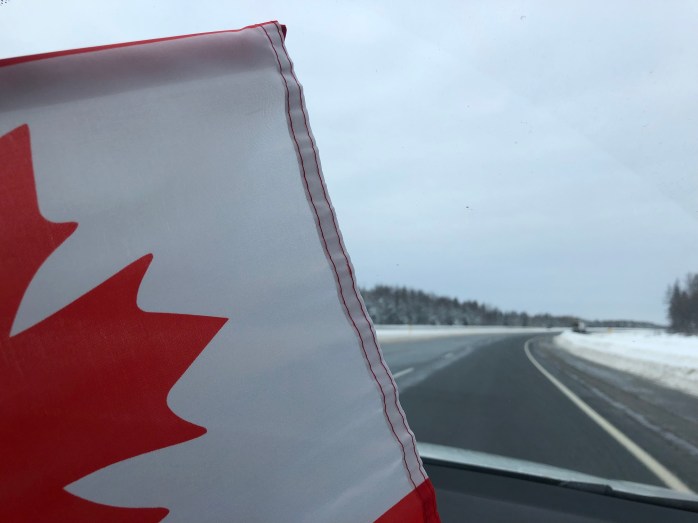
En route to Ottawa, we had a stopover to see family in Montreal. Where, unknown to us, a Freedom rally was planned for February 12, 2022! Perfect timing. I unravelled and waved my flag with thousands of Canadians gathered in Jarry Park for “United in Love for Freedom” (Unis Dans L’Amour Pour La Liberte). Politicians, educators and first nation leaders gave speeches; we sang the Canadian National Anthem, jostled amongst a crowd of young and old, shouted Liberté! We talked to friendly, smiling people en Anglais and en peu de français.
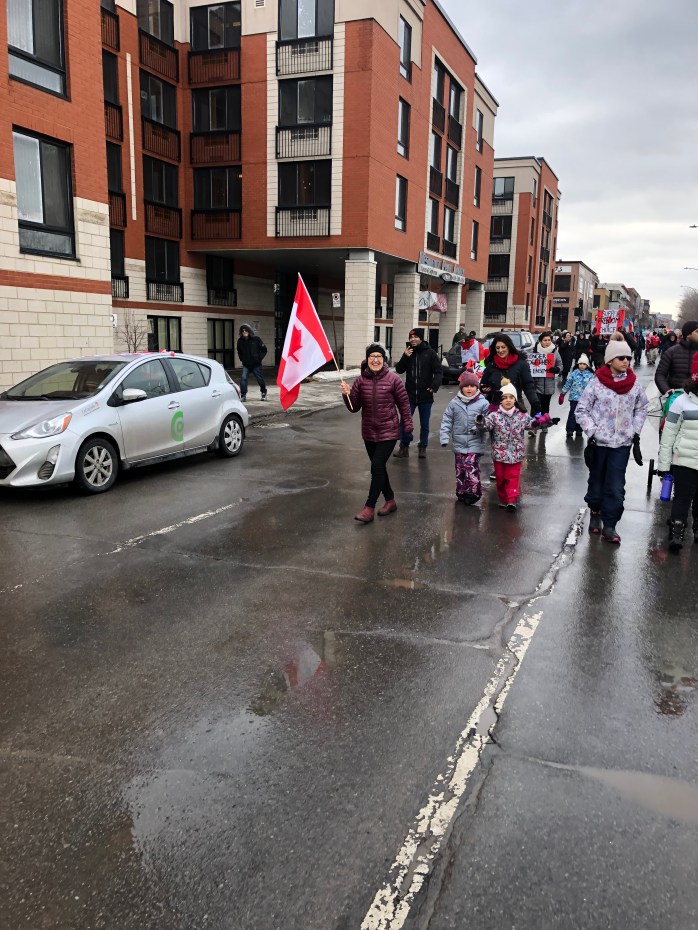
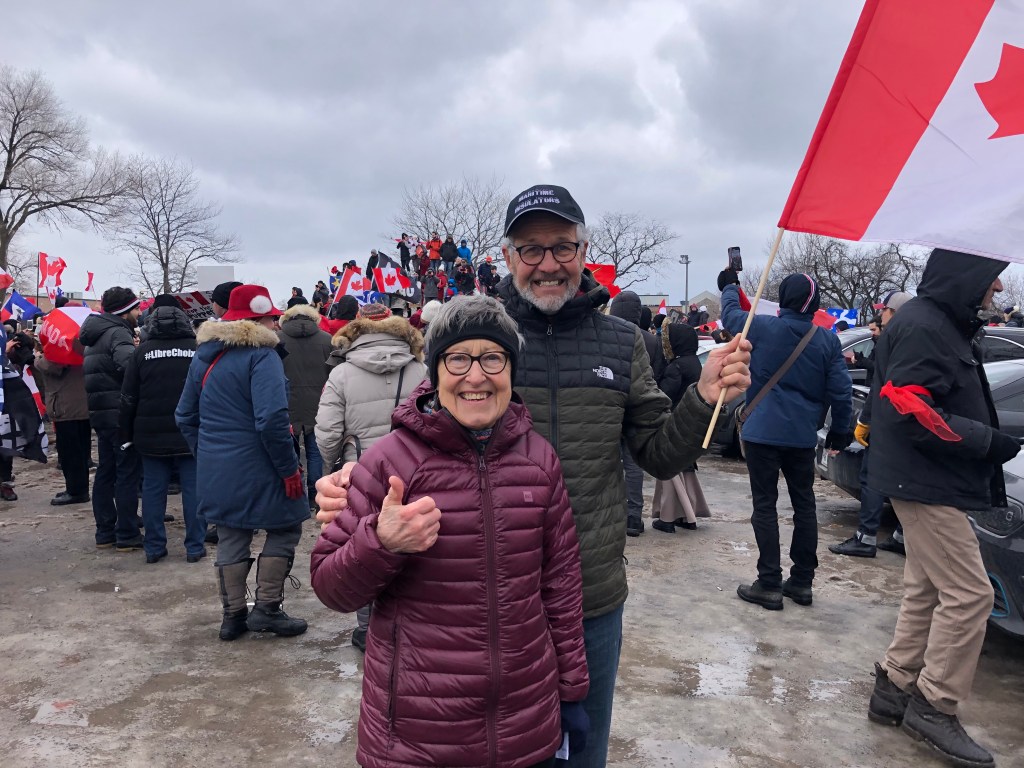
The next day, February 13, 2022 we drove about 2 hours from Montreal to Ottawa. We were there: the symbolic heart of our nation, home to Canada’s federal government.


We were there seven (very cold) hours walking the streets: it felt peaceful; humanizing; unifying; mingling, talking to other people spending the day just like we were; talking to truckers; listening to speakers, musicians; dancing to stay warm; an absence of anger, illicit signs or language.
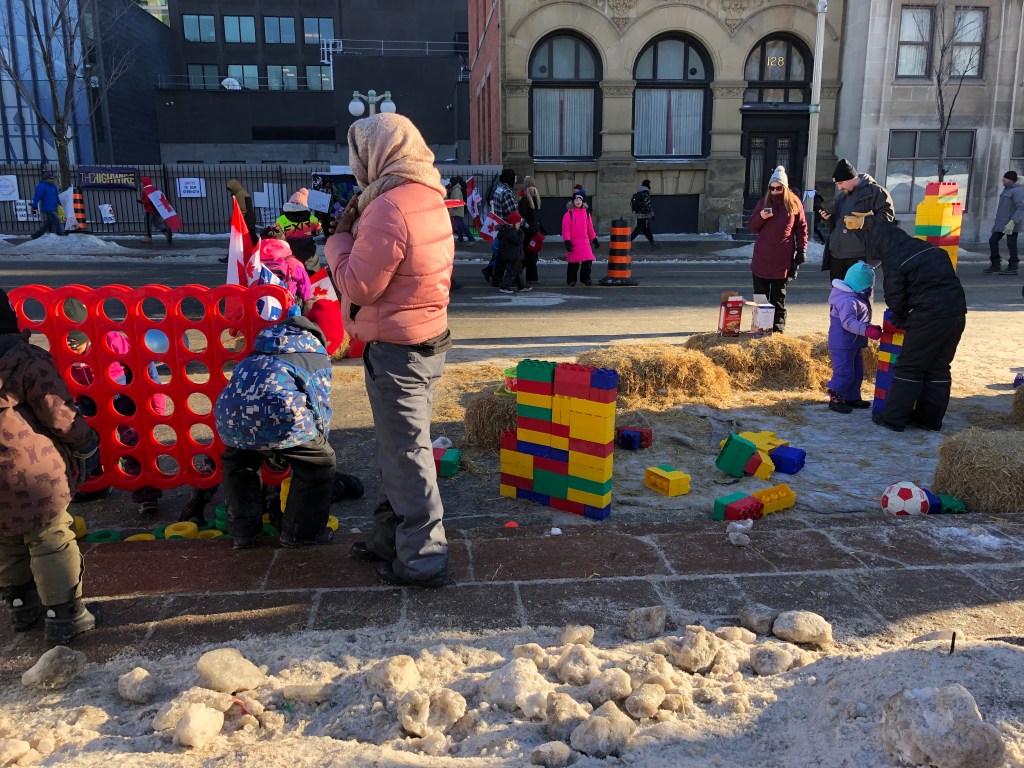
We looked for and discovered some Nova Scotia connections: a trucker with his rig.

Our Nova Scotian flag identifying hospitality and welcome to an East Coast Kitchen Party. Too bad we were on a short visit and had to miss the party.
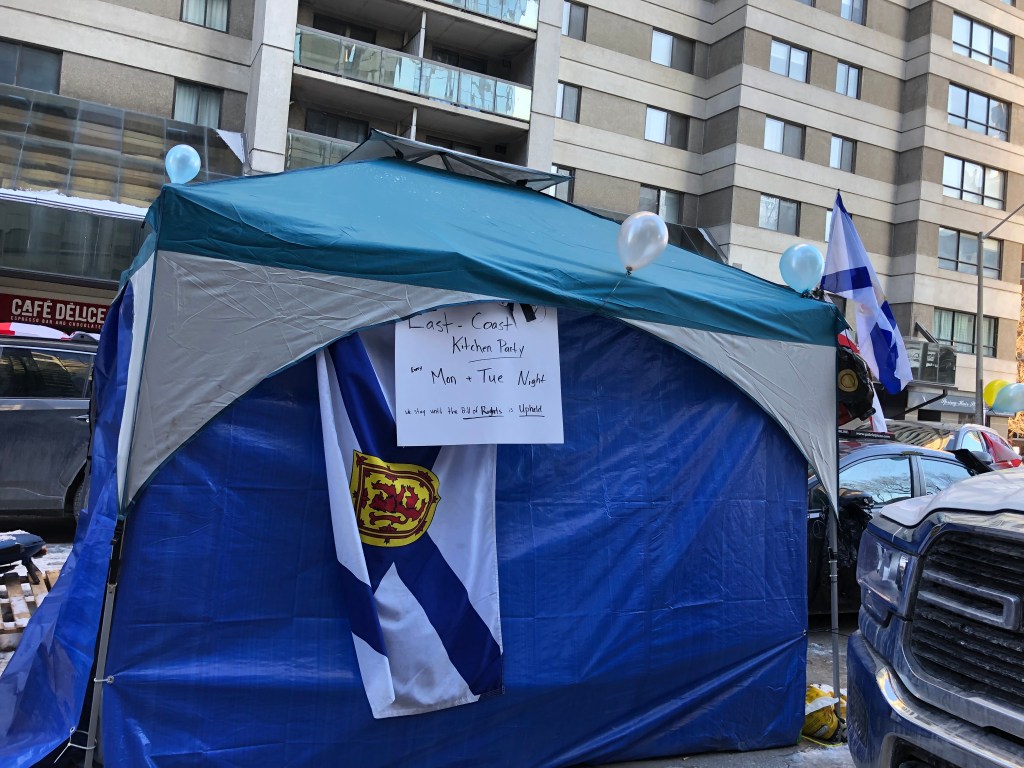
Sadly, on February 14, 2022 – the day after we left Ottawa – the peaceful landscape of this protest for protecting Canadians’ freedom and justice was disrupted when the federal government invoked the Emergencies Act.
How many and how deep are the potholes ahead for our wonderful country of Canada? Nobody knows.
I cry, I get frustrated, I share my heart and my words.
A truck flag –banner bears witness with my heart’s hope and prayer : God keep our land glorious and free!
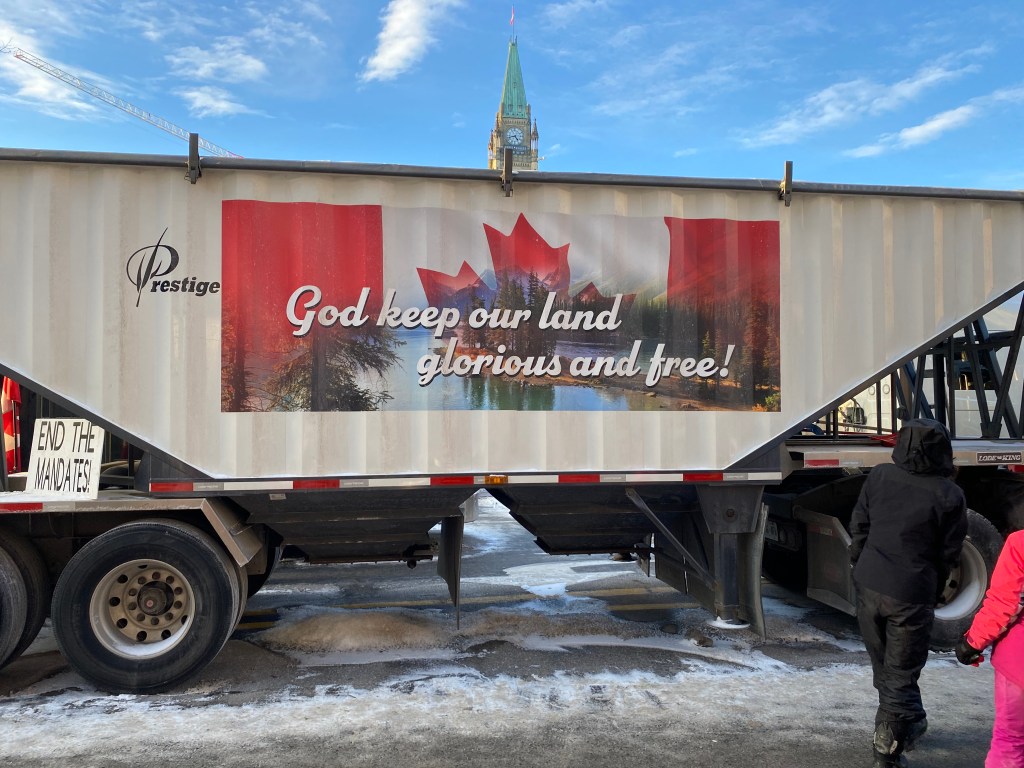
Life Disrupted: My Season of Wintering

It was like any other morning. I pulled back the covers, swung my legs out of bed and stepped down, ready to rock and roll. Whoa! Pain in my right hip triggered a nerve to go berserk down my leg, stopping me in my tracks. Without any sudden moves or different twists or angles, there it was. It was October 27, 2021. I’m glad I didn’t know then that three months later I’d still be in my season of wintering: a concept I’ve been unwrapping in Katherine May’s: Wintering:The Power of Rest and Retreat in Difficult Times.
I understand winter.
My childhood years in central Alberta, Canada were long enough ago to remember ten-foot snow drifts along our country road; skating for weeks on the frozen slough behind the barn; extra work for my Dad to feed livestock and keep milk cows healthy in a steamy barn. As an adult I raised a family with my husband who established and worked in our construction company year-round.
My visceral experience with the natural world of winter is cold and dark, not weak or easy.
In spite of the pain, I couldn’t just curl up in bed and wait for a miracle. I’m wired for movement; in spite of the agitation from nerves gone amok, I had to be doing something. In spurts of activity I moved about my kitchen, preparing ahead for Christmas feasting. And went for short walks in the sanctuary of the woods: breathing deep and sensing my ever-present Creator.

My walk of Faith is also a non-rigid practice of reading Scripture, praying, journaling, and during these last weeks I’ve logged pages with laments, questions, declarations of hope and trust, railings: “God, are you there, hearing my cries?” – along with “thank you!” for the wonderful moments of respite, sensing I am being supported by a Being greater than myself.
I’ve been privileged to also access health professionals skilled in a broad field: medical and naturopathic doctors, chiropractor, acupuncture, physiotherapy, osteopathy, massage: costly financially, and emotionally with hopes rising and falling. I’ve been recommended to try – and have – an arsenal of tricks and tips: belly-breathing, stretching (some contortions of my own design searching for the sweet spot), hot pads, ice paks, rest, yoga, over-the-counter-painkillers, hot morning baths with Epsom salts and essential oils. Their short-term relief have kept me sane. The belly breathing, stretching, hot morning baths with a cold shower finish could become my lifestyle hacks for a more limber body. But not yoga. I gave it another valiant try but it’s truly not for me.
Back to the book.
My daughter Renee and I swap books – as much as we’re able to living two provinces apart – and Wintering was the most recent exchange. Uncannily, it was during winter solstice when we met for family time at Christmas! This book was a ringer, helping me begin a shift from quick, get me out of my discomfort (something nobody escapes!) to alright, this hurts a lot, but I’m okay here. After weeks of grappling to figure out what was causing my pain and how do I stop it; Wintering “…invited me to change how I’d been relating to this fallow [bare] period in my life” (paraphrase from book’s flyleaf).


May writes from her own experience and that of her interviewees: categorizing Wintering into eight sections – September through Late March – her personal narrative of lessons for rest and retreat sourced from the natural world – also literature, mythology, and much more. Some parts of her book resonated more than others – i.e. her experience swimming in icy waters, which I tried once. Two minutes is hardly swimming! But it’s my beginning for future ocean dips: not only for pain but a host of other benefits that May shares in her book. If you’re curious, here’s an article about cold water dippers.

It’s taken me time (a crucial part of healing), and reflection during the course of writing this post, to finally get May’s message and the courage to practice it. I can accept unhappiness (for me, an Enneagram Type 7, happiness is a big deal!). I can endure painful hardships of wintering. I can embrace the power of rest and retreat. At sixty-eight, I think I am getting it: life is not linear, life is cyclical.
Where are things today, this last morning in January, 2022?
Minimal pain: no more wild, wacky stuff. More comfortable sleep without aids like heating pad, cushions, ice pak, vial of “just-in-case” pain-killers on my bedside table. I shout Hallelujah for all these blessings.
My healing is still in progress: multi-faceted emotionally, spiritually, physically. In the latter I’m grateful for so many options available and feel most effective has been chiropractic adjustments on my Sacroiliac joint combined with consistent stretching.
A few personal revelations:
- I’m humbled by my broad expanse of supportive family and friends. Especially my husband Derryl.
- I mourn shovelling snow, hauling firewood: winter physical activities I’ve taken for granted.
- Disappointment in how self-absorbed, inward-focused I can (have) become. Yet learning, in my lowest moments, to find grace for my weakness.
- Empathy for those suffering from chronic pain. “God help me to care and remember more.”
Fear – of not knowing how long, or will this never end – is crippling and tough to fight. These help.
- I committed to join friends in July, 2022 for a cycling trip in Newfoundland. I set my bike up on a trainer in my spare bedroom for easy, short periods of cycling exercise.
- my friend Christine shared in Mindful Musings her experience in visually looking ahead – not a fluffy, empty practice but with power for changing reality. One of the most positive people I know, she shared with me the story of her first stroke in this post.
- meditating on Biblical Scriptures, i.e. Psalms, the Lord’s Prayer
- a focus on gratitude : music: Brian Doerksen’s lyrics reading: Attitudes of Gratitude: How to Give and Receive Joy Every day of your Life . M.J. Ryan shares this practice “Before getting up in the morning, I have asked myself what I could count on that day , both externally …. and internally… just for today.” (adapted from practice by Vietnamese Buddhist monk, Thich Nhat Hanh: passed away January 22, 2022 at the age of ninety-five.)
Before wrapping up I must acknowledge ‘the elephant in the room”: the enormously difficult world-wide Wintering we’ve had for almost two years. Collectively we’ve tried every conceivable practise and strategy to survive in this season without end.
I have little to add; beyond extending my heart aching for your pain. And a short quote from the end of May’s book (published in 2020) – written from a different context but applicable nonetheless: “….We need friends to wince along with our pain…people who acknowledge we can’t always hang on…to give ourselves a break when we need it and to be kind.”
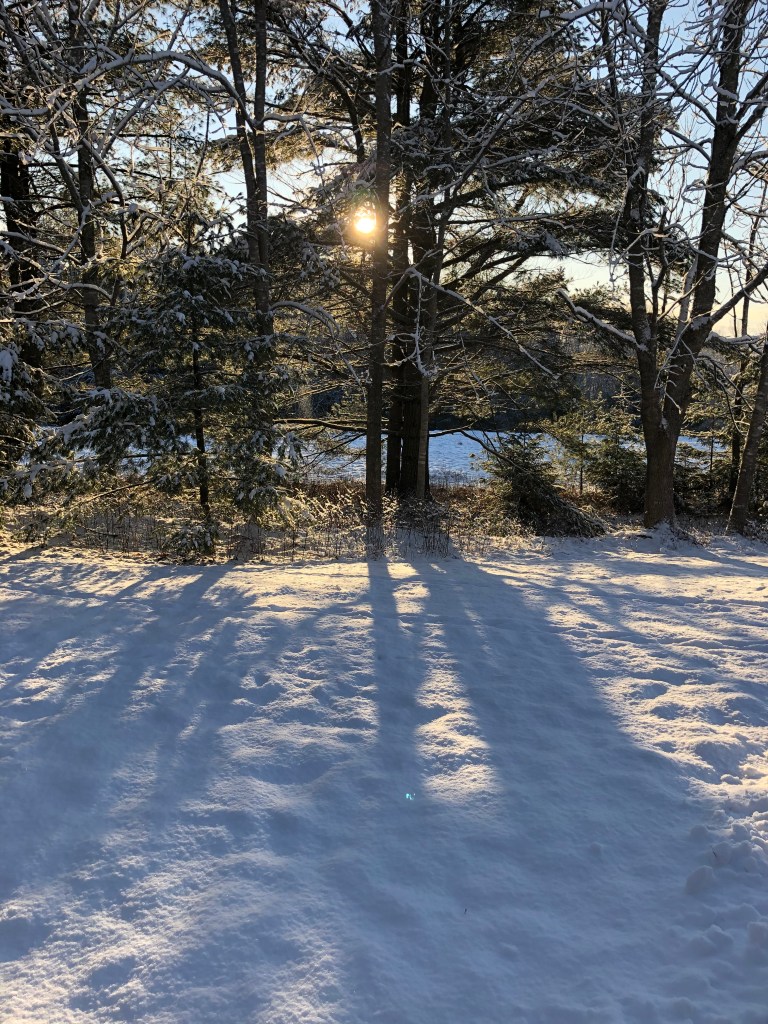
Stay connected. Reach out – we can make it through the winter.
Love and prayers for your peace,
Karen
UPDATE: Feb 2/22 – Day by day I’m feeling closer to ‘normal’. Thank you to so many friends who have read and cared with emails, comments, phone calls. Sharing our stories and supporting each other: this we can do in every season. xoxo
Family Moving to Nova Scotia: A Dream I Didn’t Even Think to Wish for

When I get messages from my kids – texts, emails, phone calls – they’re special news bulletins I read or pick up as fast as they come.
Text April 11, 2021 “Hey Mom, are you and Dad available tonight? I’d like to chat about something in particular (nothing bad!). Damien and I have been discussing how the next fifteen years might look for us and want to start the conversation how your future could be a part of ours. Can we talk soon? Renee.”
Thankful for the disclaimer, my mind starting whirring, where was this going? Maybe Renee and Damien had discovered a piece of land for getaways from the hubbub of Montreal. Maybe they wanted a consultation with Dad the builder.
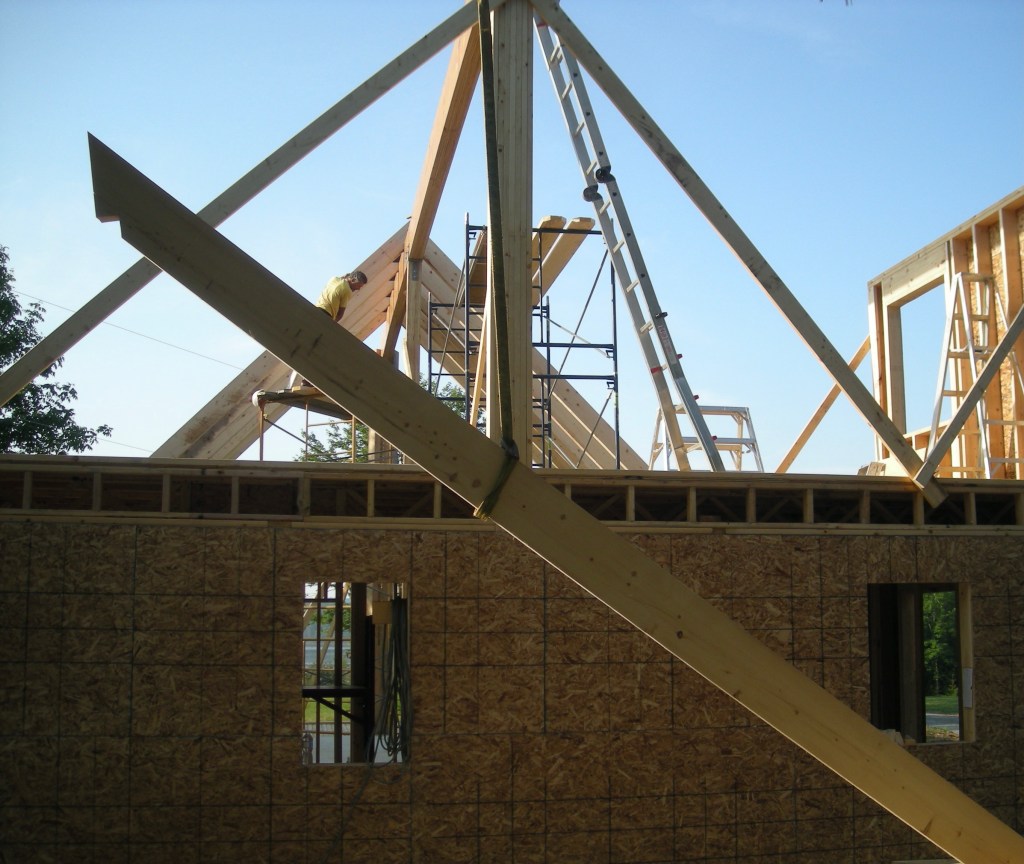
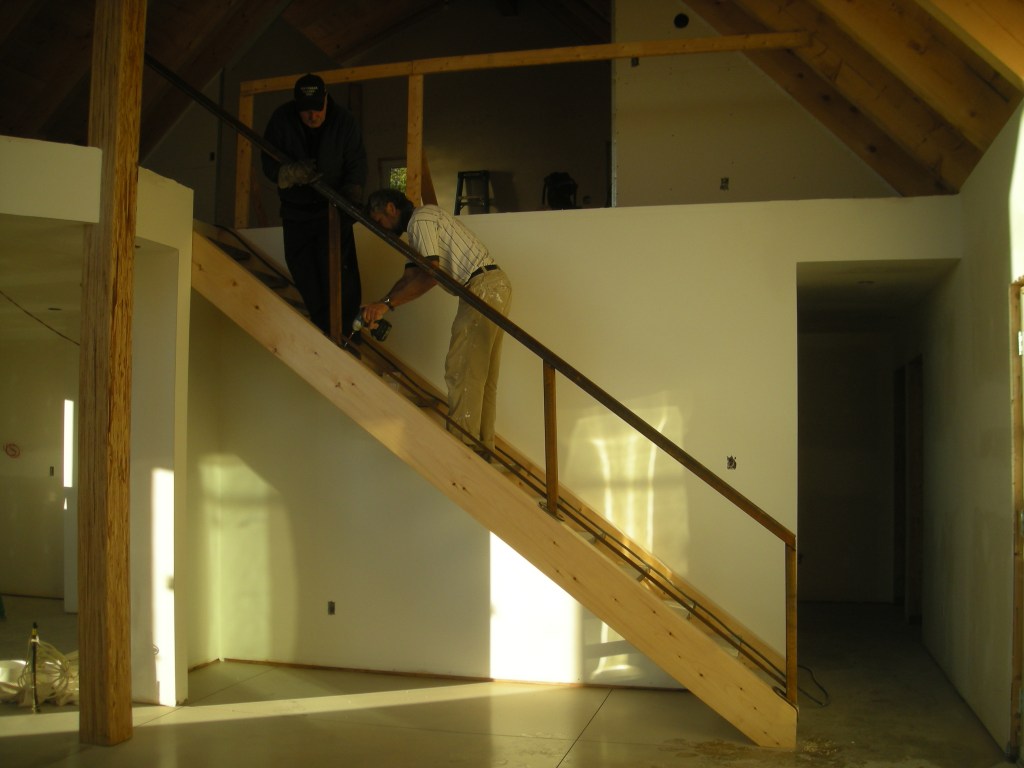
Or maybe it was connected to those inserts in earlier conversations about Derryl’s and my future. The first time was eight, maybe nine, years ago when Renee and I were enjoying a walk and talk in the woods.

“Mom, I want you to know I’m taking care of you and Dad when you get old”.
Whoa! Like wind through the trees, the thought swooshed through my mind: “oh my goodness, what did my daughter just say’?!
“Uh. That’s amazing, Renee. It’s comforting to hear that, and wow – thank you.”
At that time Derryl and I were about sixty years old. Blessed with energy and good health we were living our life story – not using a script for being a certain age. Derryl was busy with building construction and motorbiking jaunts: my days were full managing our acreage home plus hiking and enjoying the outdoors.
I knew Renee wouldn’t say something with such conviction just off the top of her head, but I wondered about their three kids. How would their education and future adventures fit in with this idea? I wanted to say, ‘are you sure, Renee?’ but didn’t. I had a feeling in my bones that whatever directions our lives would take, being together in the future could probably work out. Renee and I didn’t carry the conversation further, but I was thinking if this does happen, it will be a long time from now!
Derryl and I phoned Renee the next day. She jumped right in with, “Mom and Dad, I’ve told you this before. I want to care for you when you get old. Even though Damien and I enjoy the outdoor activities in Quebec it doesn’t make sense for us to buy property here, when all the conversations for our future have included going to Nova Scotia.”
“Really?!” I said, totally surprised by this.
“Yes, it’s true” said Renee. “And to me, caring for you means I want to spend time with you, be close to where you live. Yes, taking you to appointments and helping you in other ways, but besides that, to be sharing what we enjoy. Walking; discussing books and ideas; being in nature. Hanging out together.”

Thinking back, since that walk and talk in the woods, Renee had reminded us of her plan five, six times, maybe more. Derryl and I hadn’t given much thought to the logistics of her wish. Wasn’t that a conversation for later, like in our seventies? We planned for our financial future and that was pretty much it.
That post-text chat continued: “I care about living life with you Mom and Dad, in your old age; not waiting to come sit with you when your health requires you to be in a medical care facility. And just to be up front about how I feel, I’m not sure how good I’ll be for the intimate personal care: but I plan to be connected with you in person, with your heart and spirit, throughout your aging journey.”
Now that made me smile. This was just like her forthright Grandma Forsberg (my Mom). Renee got the message across in a way that Derryl and I understood we’d be respected, cared for. Loved.
Next item in our conversation: Renee wants to come and spend blocks of time with us long before the ‘helping my aging parents’ stage. Maybe as soon as the next two to three years. That is good news as the phase ‘we’re old and need help now’ doesn’t reveal itself at a precise moment in time. Plus – if we can – we want a picture-window chunk of years together. Renee and Damien work virtually; spending a month or more here in Nova Scotia wouldn’t be very different from previous long-haul spells they’ve had away from home, i.e. the months they’ve worked and travelled with their three children.
My initial concern – what about the kids? – was for naught. Renee’s super-power is organization and planning ahead.The kids are young adults: in university, with part-time jobs, and though they’ve spent lengthy periods of time here, their home is Montreal. They might not come to NS as often as before: a sad thought for Derryl and I, but we get it. For the most part, the kids will live at the family apartment; well-able to manage by themselves. Pippen, the feline family member, might also choose country living over Montreal. His feral kitten-hood introduced him to the joys of freedom in the woods, and though I’m not a cat lover, he and I have established a compatible, even friendly relationship. He’s in on the plan too.
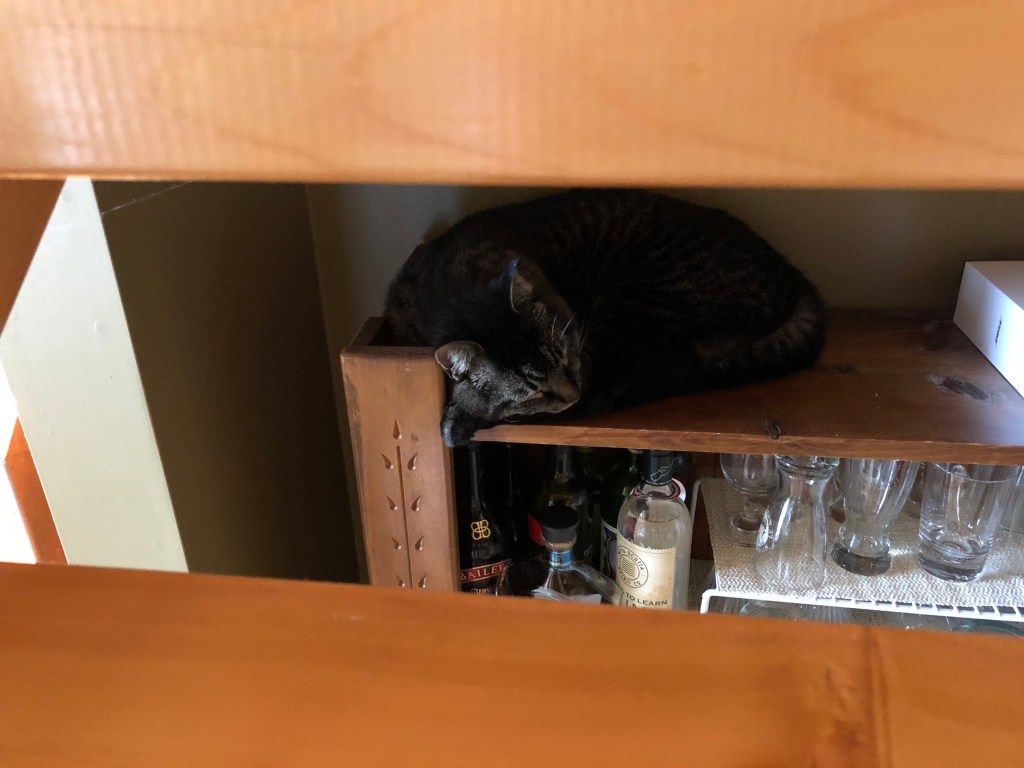
As our phone chat continued, the wheels picked up speed.
Dad the builder: “You’d want your own separate living space to live in when you come, wouldn’t you?”
“Yeah. It would be great when we come for those weeks or months at a time, but for sure it’ll be necessary later down the road.”
“Exactly. Real estate prices are crazy right now, but I’ll keep my eyes open for a nearby property.”
“Dad, how big is the acreage where you and Mom live? Is it big enough to add another house?”
Now the lightbulb came on!
“Hey, Renee, we have four and a half acres. Plenty of space. Why didn’t I think of that?!”
The spark ignited; thoughts and ideas tumbled out as Renee, Derryl and I brainstormed how this might look.
“We’ll subdivide a piece of the property to ensure that detail is clean and tidy. I’ll build a wonderful house for you to come to in Nova Scotia – with room for the kids too.”
“I love the name you have for your home – what do you think you’d call the new house?”
“We lived in the Sanctuary two years before we came up with that name. An inspiration will show up when we’re ready for it.”
“Renee, imagining here on this property in NS – you and Damien, the kids, maybe even great-grandkids – makes this Papa’s heart sing!”
I jumped in when I could: “When I’m done with the stairs in the Sanctuary it will be time to switch houses.”
“Dad, we’ve got lots of time. Your design ideas for the house sound great, but there’s no need to go wild and crazy. Our family of five has been living in a 1000 square foot walk-up apartment!”
Whew!! We had enough on the table to process and plan. Plenty for Derryl to get excited and start dreaming about, and for me to envision sharing meals, walks in the woods, shopping at the farmer’s market.
We wrapped up the call: to be continued.
That kick-off chat was several months ago. Derryl paid no mind to Renee’s suggestion and started sketching house designs. My dreaming and actions moved towards home and garden.
The perennial beds must have been shocked this summer by the enthusiastic attention triggered by my long view for their happiness and health. I texted Renee about my newly acquired pleasure in planting trees and shrubs I may never see to full growth.
“Mom, do you have a lilac bush planted yet? Also, I vote for a magnolia tree. (I Googled to make sure they grow in NS). Magnolias are just stunning in spring! I can’t remember, have you planted raspberry canes?”
I had the lilac and magnolia covered but not the raspberries. That changed May 25th: as logged in my gardening journal: ‘Today I planted fifteen raspberry canes. I grew up picking and eating this fruit on my family farm where Renee’s childhood is also linked to these delicious berries. It makes sense to me now to get a patch going. We installed two motion-detector water sprayers. Hope they deter the deer.”
Now in November, I realize certain things matter more inside my house too. I want to put myself into these rooms, these walls (which for the record, will never be spotless as that’s not my gig!). My hope is for Renee and Damien and their family – including those yet to to be added – to feel the spirit of their parents, their grandparents, who loved and lived in this space.
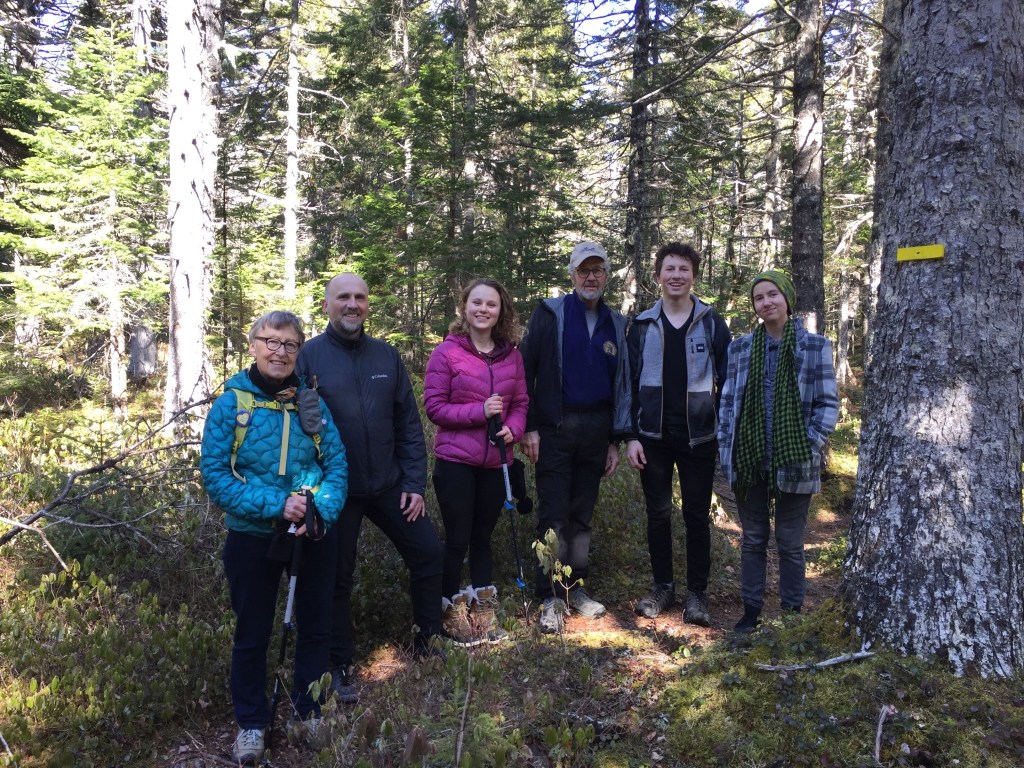
When my husband and I moved from Alberta to Nova Scotia in 2007, we left behind ALL our family connections. No more Friday morning breakfasts with my sister or sharing family anniversaries, birthdays or “let’s meet for coffee.” I left my roots at the farm where one of my brothers still lives; where my siblings and their children and grandchildren regularly visit. When I travel back to Alberta I always must ‘go to the farm’, to the land that belongs to me, and I to it.
Renee and her family’s memories may never take root as deep as mine, but my vision and hope for their future on this land brings me unspeakable joy. In my understanding, family caring for their elderly members in-house isn’t as common here as in some cultures. Yet the more I share this prologue for our multi-generational living, I’m hearing of other families planning their care-giving households. I am hoping this is a growing movement.

Months have passed since that first text; Derryl and I are still wrapping our heads around this gift. Work, decisions, issues, negotiations – it’ll all be in the mix of fulfilling this dream. Our daughter’s fiercely loyal, nurturing heart and commitment – along with her husband’s support (thank you, Damien) – is humbling. We are in this together.
Jumping for joy!
Love and hugs – from my home to yours.
Karen
Do first Solo Campout – 2021 ✓

My wish to do a solo campout had simmered long enough. This was the year I made it happen.
Conditions were right: I had a beautiful destination in mind (important detail to me), I could easily explain my whereabouts to local hikers, and ‘warm and dry’ was in the forecast.
I love to camp but this time was different. I had a purpose. To discover my response to alone-ness in nature’s quiet darkness; would I have confidence and ingenuity to handle unknowns – and what about the wildlife?! I wanted to dip my toes into a practise run for future solo camping: to say I can do this and encourage other women my age to do whatever is the thing they’re wanting to try.
The closest thing to this kind of adventure as a kid, was when my friend and I lugged a blanket to a field midway between our homes in the country when we dared each other to sleep overnight under the stars. Camping much later after that – with my husband and children – was using RV’s that my parents generously shared with us.
Tenting with camping began for me in 2007 when we moved to Nova Scotia. Being closer to our daughter Renee, husband and family who lived in Maine, we were able to discover hiking and tenting with them; eventually joining them for a couple sections on the Appalachian Trail (AT). I discovered the fun and comfort of tenting and sleeping in the woods and the feeling that ‘whatever I need’ I’m carrying on my back. The overall AT experience, meeting women hikers there (some of them going solo), triggered my itch to hike and camp alone.
The most daunting detail for my solo trip was pitching the tent. Crazy but true. I can do it, but where possible, defer that job to fellow campers while I find firewood and water. To build my confidence, the day before my solo trip I pulled out my light-weight single tarp tent and had a practice run on the grass in front of our house. No one was around to observe how long this would take. I reviewed the instructions I had printed out, emptied the bag with those extra cords I’d never been sure what to do with, added some extra pegs to the gear bag and figured out how to use my foldable hiking poles for tent supports. Yay! A successful trial run.
The next morning after confirming with friends where I was going and when I expected to be off the trail, I drove to the trailhead, strapped on my pack, and started walking. The first section was a multi-purpose trail and on that afternoon a brilliant pencil-thin snake and I were the only ones using it!

Pivoting off the wide trail and onto the narrow one through the woods, I watched for scat. I’m not an expert at reading animal poop, but I know what bear scat looks like. I didn’t see any, but there was some smaller stuff, possibly from a coyote. This didn’t make me feel nervous – perhaps living near the woods and being able to spend lots of time there – has helped me respect ‘nature in the wild’, to feel safe. But I did remind myself to “look big and menacing” using my hiking poles if I encountered a coyote, and thankfully I didn’t have to test my defensive moves.

I reached my camping spot with ample time to pitch my tent before dark. However, looking for a flat and brush-free spot was not easy to find on this (beautiful!) bluff destination. There was scarcely a two-inch layer of topsoil under the blanket of scraggly, prickly ground-cover.
Respecting the landscape for my stealth campsite, i.e. minimal disturbance to the environment, and after a couple false starts I found a suitable spot. SO grateful for those extra pegs and cords, I talked myself through it. No need to hurry. Take one step at a time, just like yesterday. Eventually my cosy nest was standing. I crossed my fingers and prayed for a night without wind.


Solitude. Supper sitting on a rock watching the sunset.
I enjoyed the warm evening (about 19 degrees Celsius) in silence, sitting on the smooth rocks soaking in nature’s beauty until sunset. It wasn’t late, maybe 9PM, but I couldn’t build a bonfire, so after a final check of the tent pegs and cords there wasn’t anything else to do other than crawl into my sleeping bag.
My tarp tent is a narrow, confined space that feels a bit like a cocoon; with the mesh lining drooping very close to my face, it was beyond cosy, a bit like a coffin! A small solar light provided a soft ambience. I read a book on my phone for half an hour and then it was lights out.
Totally dark and quiet.
Did I lie awake? I normally go to sleep quickly and I did here too. Also normal, is at least one nocturnal visit to use the bathroom, which always poses a challenge when tenting. Sparing some details, suffice it to say on this night I took extra precautions unzipping the tent, absolutely not wanting to bump my poles in their precarious positions holding up the tent, such as it was! That, plus gingerly avoiding the thorny brushes in my bathroom, made this a one-off event for the night. I laid awake for a while after this (which is also normal). Not a sound! I live in the country and with my bedroom window open I hear more wildlife there than I did on this night. No need for the bear-bell I had handy to alert any creatures scuffling about. Part of me was disappointed it was so quiet. In this wooded space, where were the animals?
I woke up at 6:30 to the sound of crows. Yay – there are animals here! The light of another glorious day was showing though the canopy of trees above my sagging, but still standing, tent.
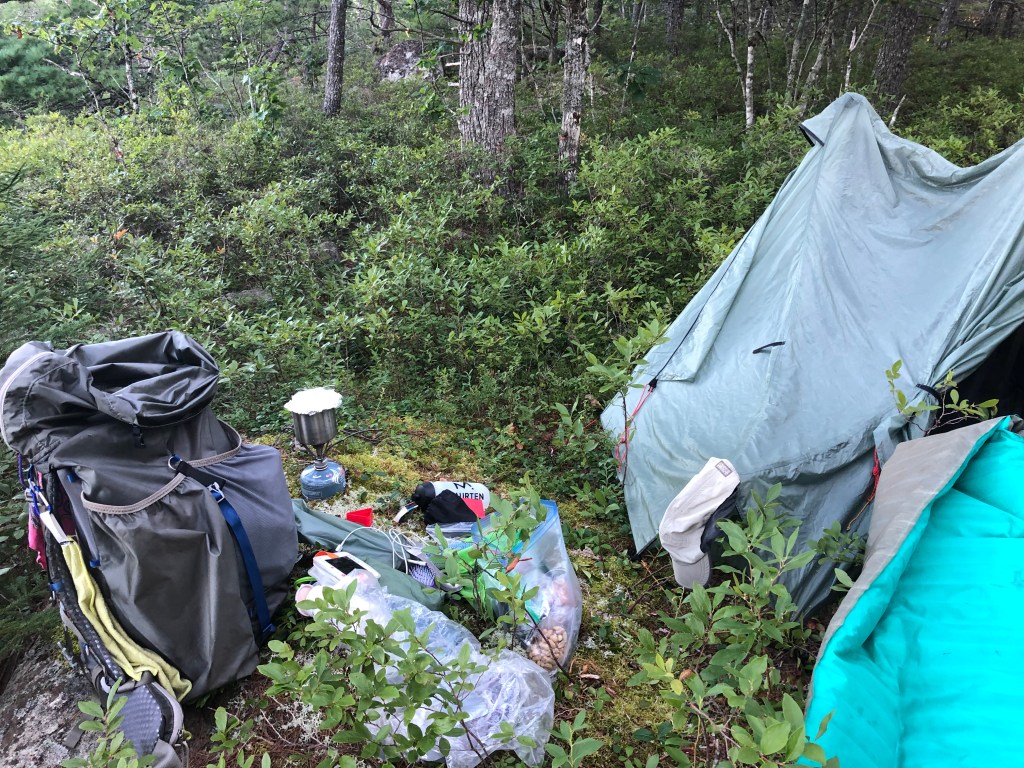
It was such a lovely morning. I made my breakfast of coffee and granola last as long as I could before breaking camp and returning to the trailhead for my expected arrival time.


I will go solo camping again. I think I will stretch the edges next time – maybe go for a longer time and/or distance, perhaps a more remote location. Not that bigger is better, but because I’ve done the practice run and am curious to discover what more I can experience and also learn about myself in going solo.
Friends, I extend the invitation. What is it that you’ve been hankering to try? If there isn’t time or opportunity in 2021, plan ahead to 2022. If you’re comfortable in sharing, I’d love to hear the story.
Love and happy camping, and tenting,
Karen
Sole Sisters Hike Mont Mégantic

Winter, 2021. I was on a Zoom call with my husband’s sister. She and her husband live in another country two time zones away, share life in a communal family household, and were then working from home. Not surprising that we rarely connect; my husband and I jumped at Nancy’s invitation to meet them for a happy-hour visit. After catching up on their merry-go-round of life, Nancy shifted the conversation to her urgency to connect on this winter day.
“I need something to plan and look forward to!”
Oh I could relate. Even during the best of life circumstances, without something exciting coming up the future looks dismal.
Nancy, dedicated in maintaining her health and fitness, was feeling ready to push her hiking passion forward a notch by adding overnight camping. I had enthused often about my love for such adventures and encouraged her, “let’s do it together. Maybe other women could join us!”.
The likelihood of reaching this goal this year with so many shifting variables was a wildly hopeful shot in the dark. But with a “why not?!!” Nancy and I jumped in. We’d dream up a plan to carry as far as possible.
Who else would we ask? Top of my list was my daughter Renee, an experienced thru hiker who showed me through the planning and possibilities of multiple day hiking. Her response was a quick yes. Yay!! Nancy checked with her sisters about joining us, being clear on details for this kind of hike: no electricity or running water; reasonable physical challenges and rewarding views; backpack priorities were sleeping bag, rain gear, minimal clothing, basic nourishing food. Weighing in on practicalities like travel, work, home responsibilities – and motivation – Nancy’s sister Ruth was a ready YES. We were a family foursome.

Where would we go? Renee is familiar with the hut and hike system where she lives in Quebec; research for Parc National du Mont-Mégantic landed us a hike-in home base cabin with four bunks, a nearby outhouse and cut wood for an outdoor fire pit and indoor stove. Perfect.
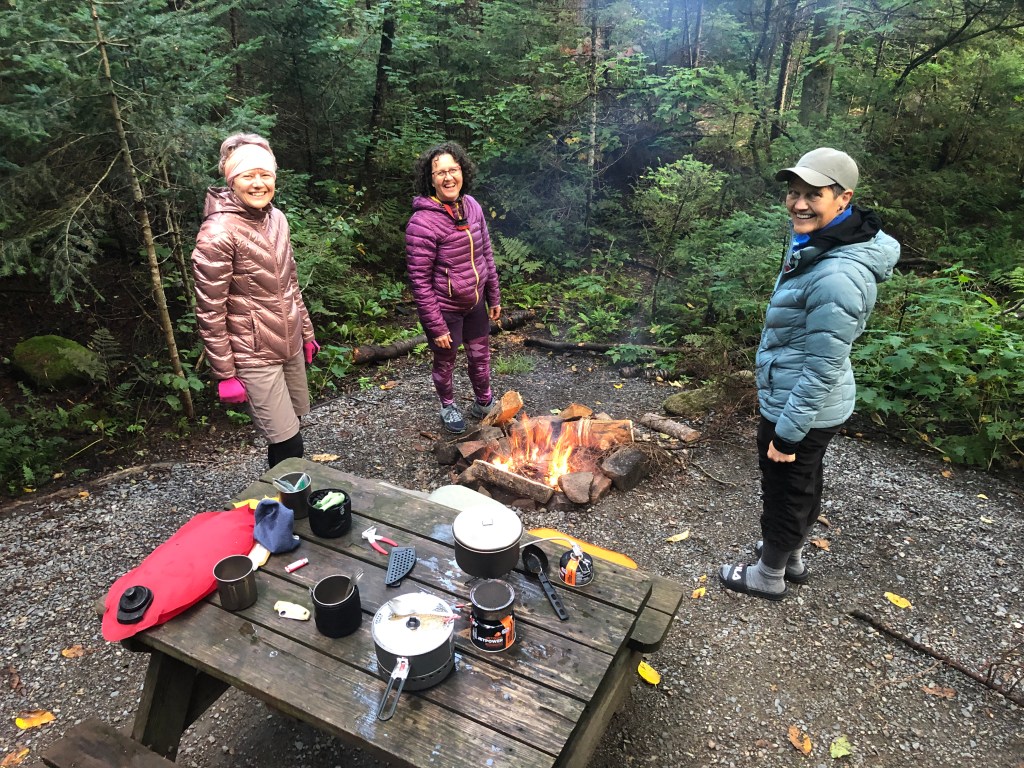
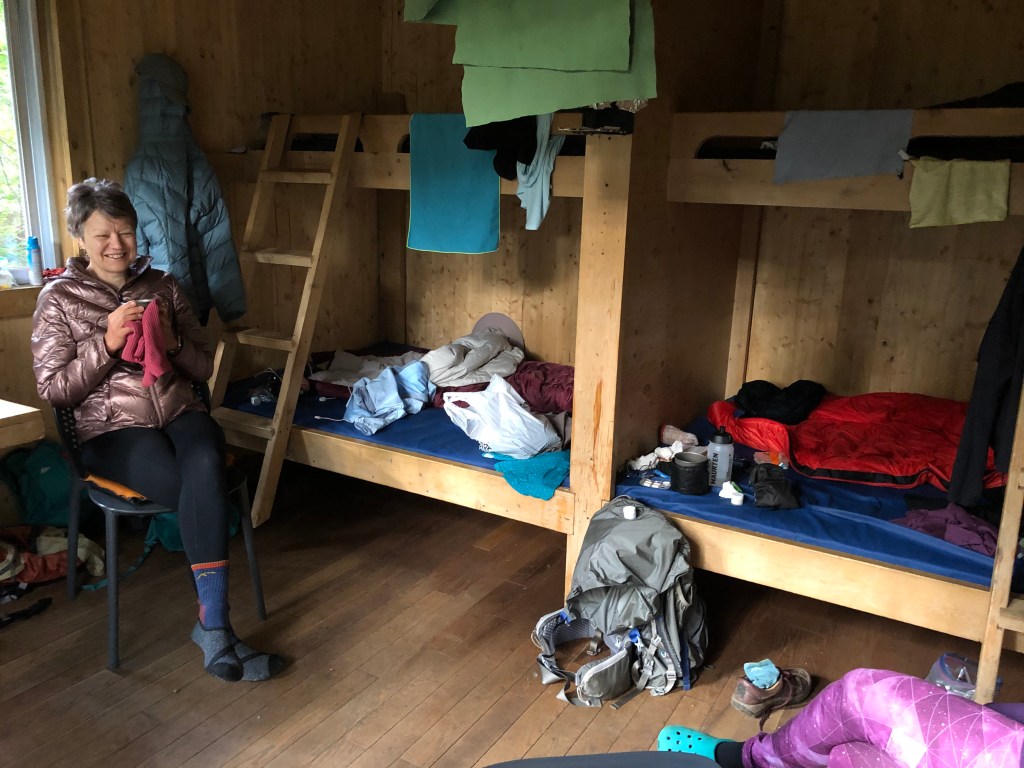
When was a big question narrowed down by work, university classes starting in September and previously-scheduled vacations. Using a blurry crystal ball we predicted forthcoming travel openings and aimed for September: this was no small detail – Nancy was flying from Minnesota, USA; Ruth from British Columbia; and me from Nova Scotia. We spun the wheel and set our hiking dates for September 10-13; committed with high hopes, a prayer, and a non-refundable cabin reservation.


We watched and waited hopefully throughout the weeks of summer, planning “as if” the hike was going to happen. Renee shared her master packing list: we collaborated on our gear needs; discussed food and water supplies; dehydrated meals; conditioned ourselves for endurance, i.e.hiking with a heavy bag of flour in our backpacks.

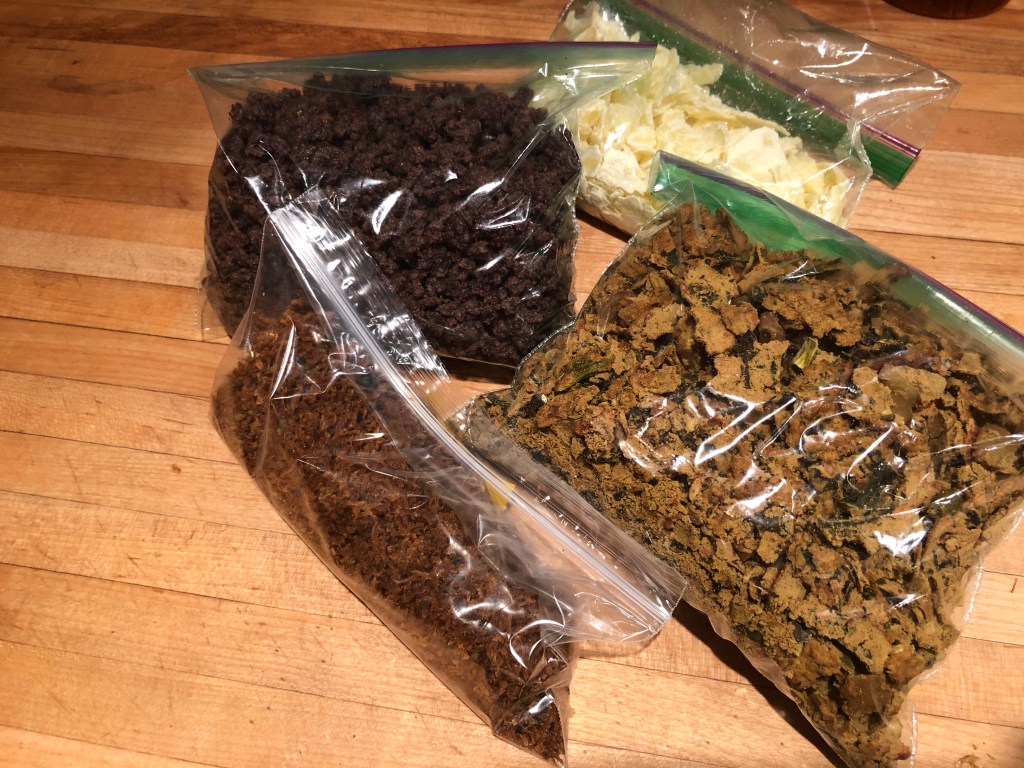
And what sometimes happens: three of us had physical mishaps that tried to mess with our mental endurance.
In July Nancy was buzzing around the house; snagged her right baby toe on the furniture. Crack. A nurse practitioner confirmed it was broken. Oh no!
“With several weeks to heal it just had to get better by September,” Nancy told us later.
She let it rest (a bit), protected it from getting jarred or stepped on, let it heal. Which it did.
Ruth was rear-ended in her vehicle three days before our scheduled hike. The driver at fault, a kinesiologist student, advised Ruth what signs to watch for the following day. Fortunately, she was fine.
Three weeks before the hike I was running up our open tread wooden staircase, and in a way too complicated for words, sprained my right ankle and scraped my shin.
I also said “this has to get better” but forgot the compression or icing routine until a week later when I finally went to ER for an expert’s opinion. After which, tight-fitting cycling sox and ice packs (along with a few more days treating it kindly), praying I could ‘let it go’, I was ready to hike the trails.
Interesting to me was that we hadn’t shared our mishaps with each other when they happened. I think it was a matter of not dwelling on something that can trigger fear to haunt our thoughts; don’t give it airtime to create worry for the others.
Thankfully all of us were able to board the flights we’d booked and once on the trail our mind, body and spirit worked in harmony. Sole Sister conversations on and off the trail were as refreshing and inspiring as the views that never ended.


Nancy’s desire was to do a multiple day hike. And Renee’s goal (a big thanks to her intuitive leadership) was to provide a challenge that would be a stretch, but offer the best possible experience that doesn’t push one over the edge.
Reaching those goals deserved a toast; an extra special treat we carefully accounted for in adding up the weight of our backpacks!

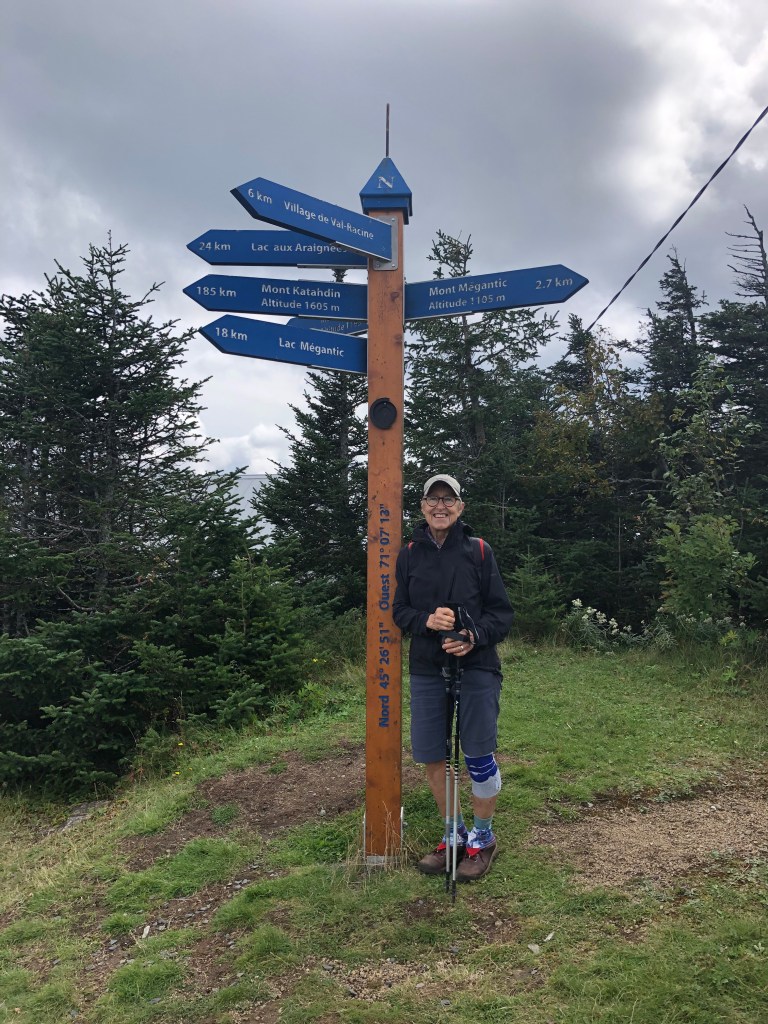
We – the Sole Sisters- dared to dream a scheme and were thrilled it happened. We hope to share a trail together another time, somewhere else. And I also hope this story inspires you to hold on and and nurture those sparks of desire to explore something you not only want to look forward to, but to accomplish.
I’d love to hear your dreams. Your stories. Dare to try, my friend.
xo,
Karen
Are we having fun yet?
Twelve of us in ten boats were paddling the Atlantic shoreline near Canso, Nova Scotia.

We had navigated through rocky inlets, shoals, surf, the wind’s wanton shifting in direction and velocity; we’d schlepped gear to where we could find suitable camping spots. We’d been soaked by rain.

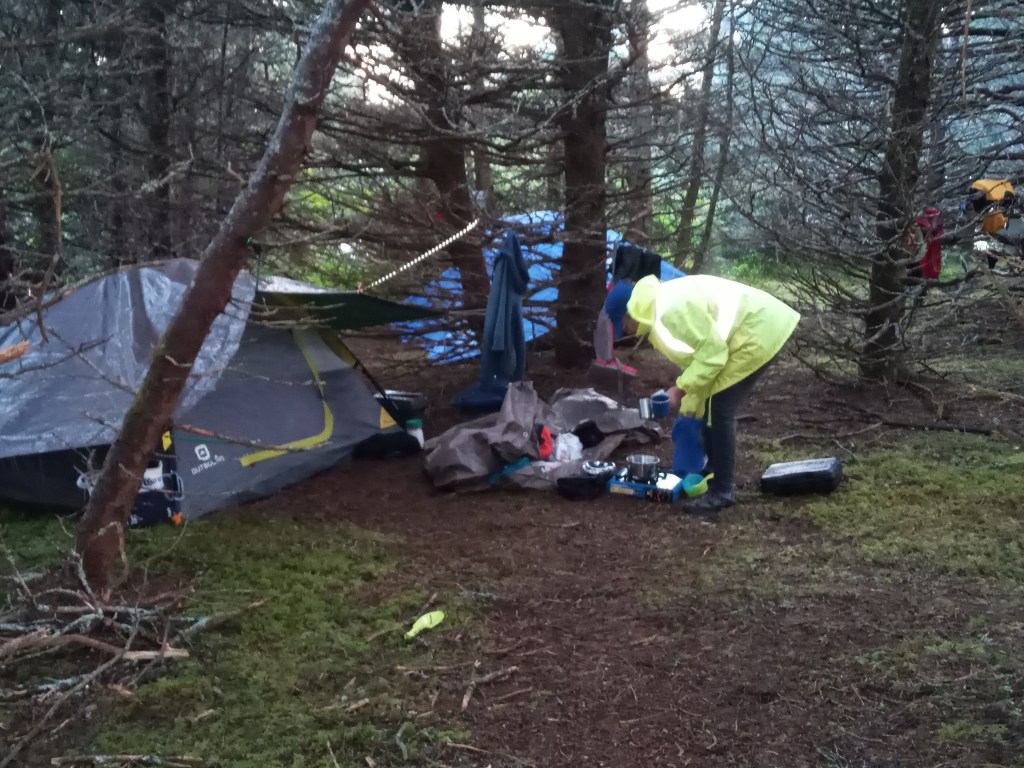
Yes, we were having fun – responding to whatever with humour and we can do this. We even had music, thanks to our disc jockey paddler and his solar panels. A definite bonus for re-charging soggy spirits too!

Then. On day five of our seven-day plan we got the call to pull off the water. This directive came on short notice, but wasn’t a big surprise.
Our group decided to split up that morning.
Some went exploring on the water, others took a hike – everyone planning to be back and spend the afternoon enjoying the beach where we’d set up the night before.

The hikers, soaked by rain when the sunshine quickly disappeared, arrived back at camp first. We coaxed damp wood into flames and started erecting tarps over tents and the cooking station, planning to create a welcome atmosphere for the paddlers’ return. While we were trying to get dry and stay warm by our struggling fire, we received the cell message from our expedition’s leader : “the wind is increasing, break camp asap and load your boats.” We were aborting the trip, and apparently the quicker the execution the better. With eyes on the weather this made good sense; the rest of the group – the paddlers – were out there pushing hard to get back to camp. And truth we told, we all were a bit weary with wet gear and the physical demands of this trip. But an early tear-down right now? It took a few disheartening minutes to process. We wondered, did we understand the phone message correctly? We had planned a two-night beach-camp here. The night before we had settled in creating a comfy space, food and gear scattered around.

Us hikers who got the call to “pack up, we’re breaking camp” talked our way through the sudden change in plans and got into action. Tearing down those wet tarps we had just tied into place; stuffing gear into bags and then into cargo holds; splitting a beer instead of packing it out. By the time the paddlers were back we were well in motion and could also help them pack up.
By late afternoon we all were ready and made our final launch: in this formation: a navigator (where are the shoals?), a lead kayak, two side-guard vessels flanking the main group, and a sweep ensuring all ten boats were accounted for. We safely rocked and rolled the swells (it does feel safer in a group) to the beach at Black Duck Cove. This is a day-use provincial park that has trails, a boardwalk and canteen, and a parking lot where one of our vehicles was parked.
For the second time that day, our group split up.
Some got busy with the trip’s final schlepping of the gear. I won’t guess the distance or laps from the shoreline where our full vessels rested, to the parking lot where all the gear needed to be ‘dumped’ and loaded into vehicles. Many steps each way. Eventually, the boats empty, we splayed ourselves amongst the gear we’d dropped on the grass and deck of the canteen. Too bad it was closed: they could have pulled in a whack of business!

The others in the group left to fetch vehicles from other locations along the coast; also delivering a thank you message with a bottle to the Munro’s, who had portaged our crafts earlier in the trip which had saved us a bundle of time and hard labour!

It was nearly dark by the time we were all together again, now the empty boats had to be moved from the water’s edge to the parking lot.
Among the ten vessels were five single kayaks, one tandem kayak, three pedal-driven kayaks (kind of like these but different) and one custom-made, pedal-driven boat that I can’t define or name but holds a LOT of stuff. And because it is wooden and heavy, needs to be moved carefully using foam rollers. Back and forth we went. Thankfully we had a two-wheeler gadget for the kayaks, and finally – in the dark, hurrah for headlamps! – our combined energy and robust spirits got the job done.
Typically after a trip like this when we’ve had fun playing hard, this group winds up with a celebratory meal at a restaurant. Not this time. We had a few hours to drive home, physically were wiped out – and hungry – so we used one of the canteen’s picnic tables and dumped out all the excess food we had left. Cheese, tortillas, peanut butter, sausage, avocados, chocolate treats – you name it – whatever we could find. It was a celebration supper in a category all of its own and one that (hopefully) will never be repeated!
Sometimes I’m asked, “what makes you keep showing up for adventures you know will be challenging physically and mentally, probably with some serious discomfort, even potential for injury?”
I ask myself that question too and I did especially before this kayak trip. I had an intuition it would go differently than planned. It was strong enough that I considered discussing it with the trip organizer. I’d feel awful, even negligent, if something really terrible happened. Yet the only basis I could pin for this premonition was paddling shores near open ocean; we’d done similar trips before without incident. In the end, only my journal and God were the wiser for my wondering. I came to rest with it and shifted my angst to curiosity, what kind of adventure was on our horizon?
We alI had a good dose of adventure, including the open-door culture-hospitality of a fisherman’s wharf and shack on our second night of the trip. It wasn’t five-star but it was available when we couldn’t find any place to pitch all our tents. I managed to secure a bunk where I rolled out my sleeping gear inside the cabin.
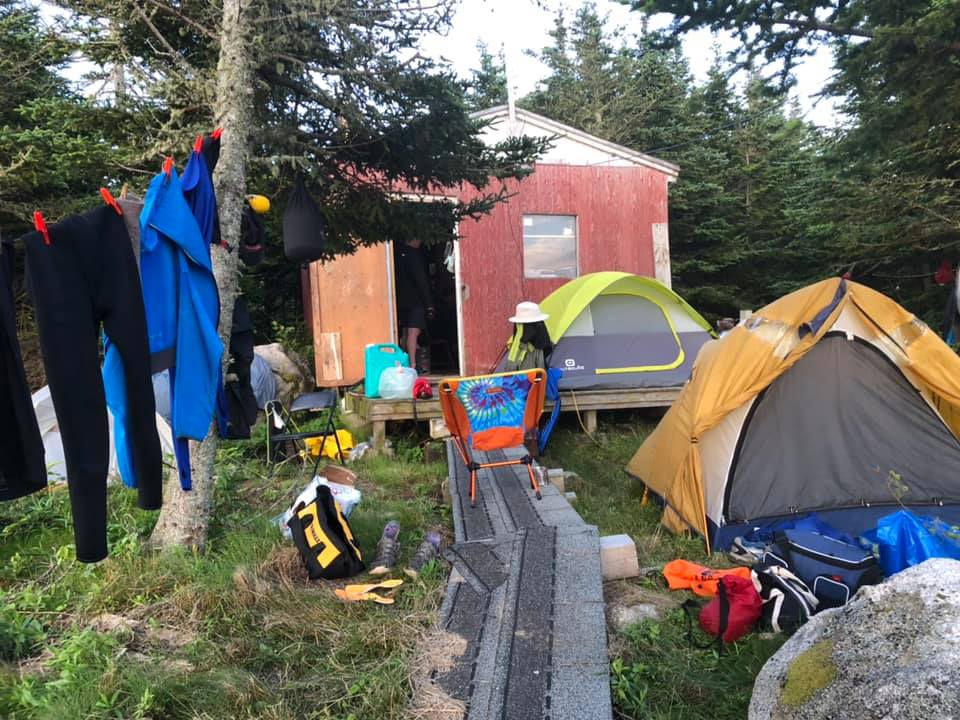
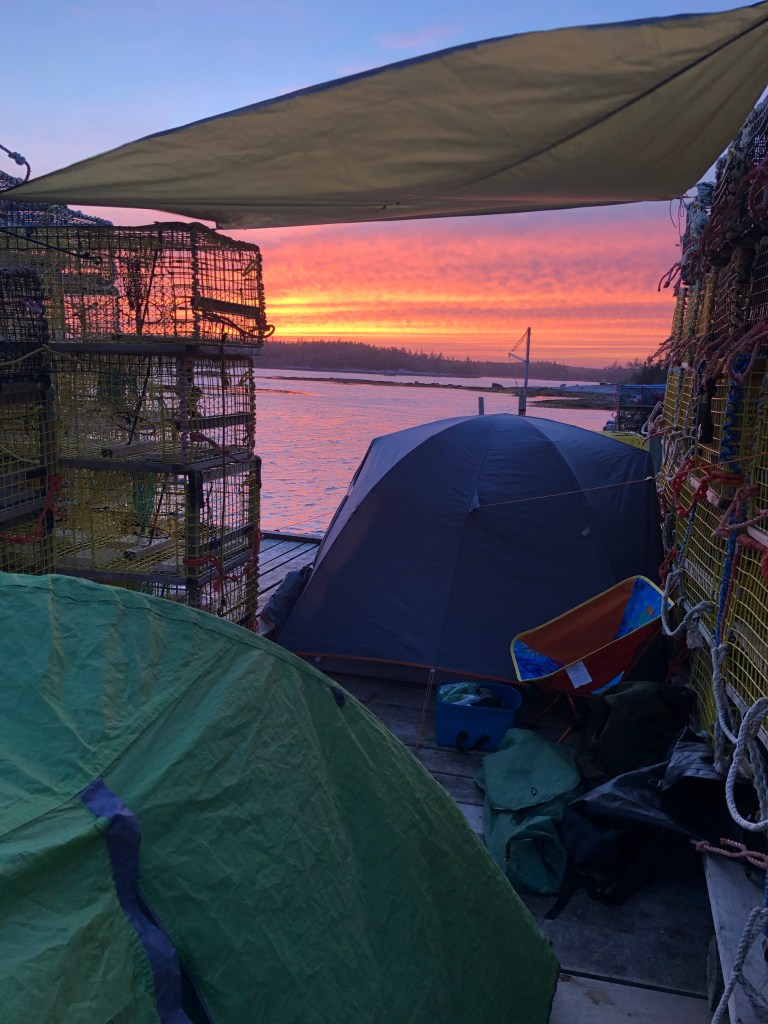
I would have missed so much had I not shown up for this trip.
Learning from people’s leadership and experience to read the signs, and knowing when it’s time to pull away from something.
Testing my physical resilience. Putting up with wet gear, paddling through swells (exhilarating!). The thrill of belonging to this energetic and amiable group and watching my mates’ ingenuity for problem-solving. These are just some of the reasons I get out and try new and difficult stuff.
My intuition was right. The trip do go differently than planned.

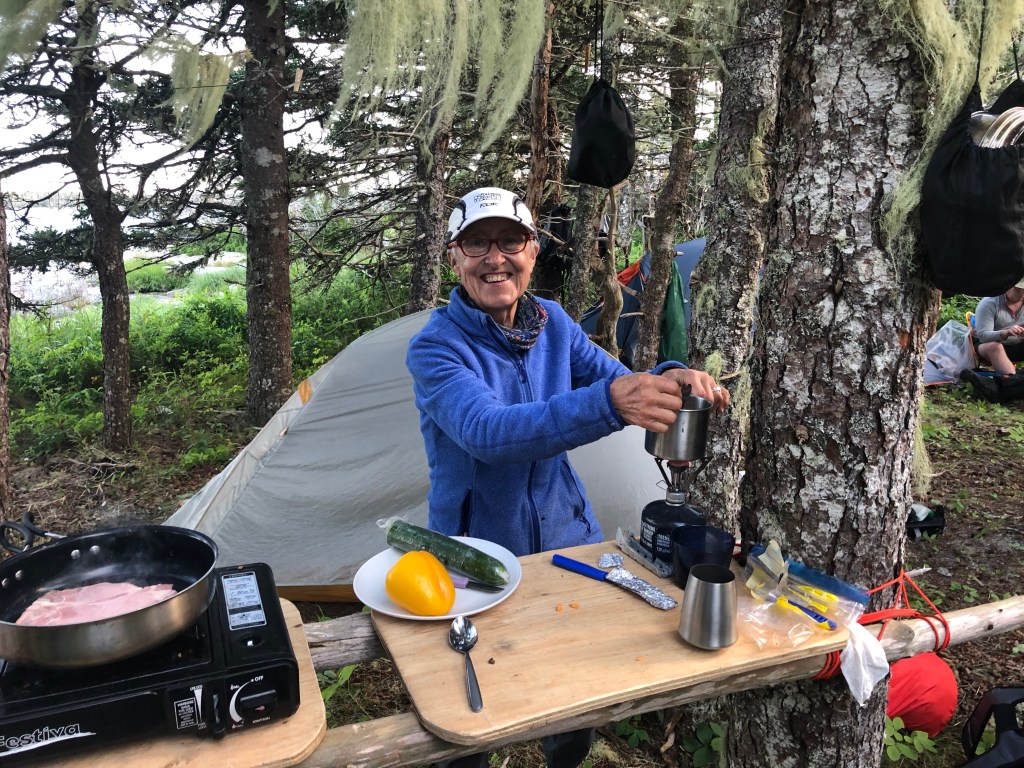
We had fun. I wouldn’t have missed it for anything.
With love and a nudge: go find your fun!
xo, Karen
PS Credits for several photos to Catherine MacRae (tent-mate and adventurer-friend both on and off the water) and my other mates whom I may have missed.
“boundary” – what comes to your mind
The place my husband and I call home borders the LaHave River, where we’re situated amongst other acreage dwellers both upriver and down.

Our property in this bit of Nova Scotian paradise borders the forest, where residents of the animal kingdom roam and occasionally wander into our yard. This can be fascinating and frustrating. Four porcupines and seven deer together one evening in the yard this spring was a bit much. Especially as they dug around and grazed on our small field, paying no mind to my yelling to “keep moving along!”
The plant kingdom brings me most pleasure: trees and flowers and veggies. I grew up shelling buckets of peas, picking raspberries, helping my Mom water and dead-head her flowers: such labours didn’t warp my love for working with plants. Excluding of course, the weeds that persistently seek and creep through chinks in boundaries of all kinds.
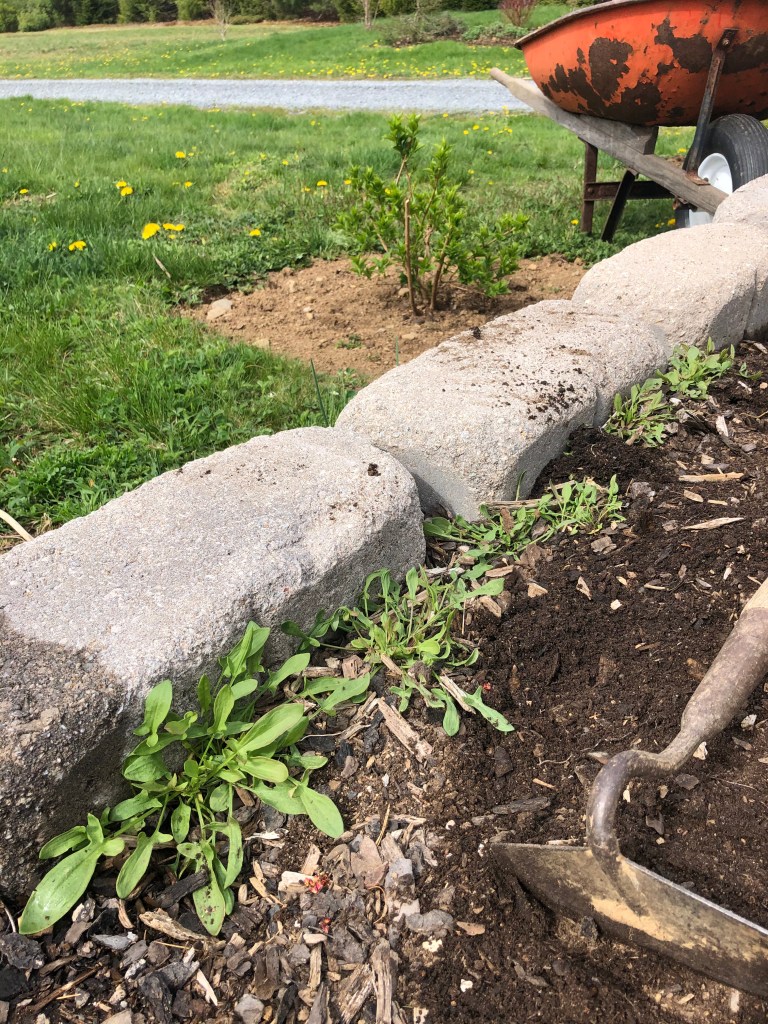
Managing the weeds and the wildlife has prompted me to consider this topic of boundaries more closely. Borders, boundaries, barriers (I’m intermingling them): what do you think of when you hear these terms?
Some possible responses: they help one define what you’re comfortable with, how you like to be treated and interact with others.
Or one may think of a specific line or object that indicates safety, i.e. a guardrail on a twisty road to help drivers stay on the road.
I resonate with Merriam-Webster’s definition for boundary: “a point or limit that indicates where two things become different.” To me that doesn’t necessarily imply one of the two things is better, or is more logically sound or universally safer. There is simply a difference.
Fluctuating differences has been our story of the last sixteen months. Navigating through the limitations has been like running the rapids: pivoting around boulders and fallen timbers, hoping to find a calm pool.
Depending on personalities (and perseverance) some have been pushing against Covid-19 barriers in their mindset – daring to be more hopeful than negative, leaning in to what they feel in their gut to be right for them, etc. To be healthy I think we need to believe in ourselves, decide what matters to us, still make plans for ourselves. One of the things I’m not relinquishing is giving up the wish to hike with my daughter Renee, who lives a thirteen-hour drive away from me. Several months ago, when provincial borders were still closed, we scheduled a four-day hike for September. There will be us two plus two others. Hurrah – I can hardly wait!! We are moving forward in our plans, pushing forward to move beyond a boundary.
For whatever I choose to do, if my decision is to move forward then I need to focus ahead to where I want to land. An illustration from my garden helped me understand this. Rocks keep surfacing through the soil in my garden (it’s like they grow all year long – where do they come from?!) and my pail for picking weeds and rocks often ends up a distance away from me. I’ve discovered this: if I toss a rock towards the pail while looking at the pail, it’s much more likely to land in it. Obviously I was never a basketball player or I’d have known this already!
This focusing principle also helped me push beyond a border I’ve struggled with for many months longer than Covid.
That beautiful LaHave River is my closest waterway for kayaking. We don’t have waterfront property to build a wharf and there’s a guardrail between the river and the road, so accessing the water has been an ongoing challenge. My husband has helped me slide my vessel over this boundary but he isn’t always available – and it seems especially so on those calm days when the river is calling my name.

I tried to find an access via nearby locations but I was at a dead end. Until the day I focused where I wanted to land: in my kayak in the water a few metres away. I wasn’t looking for a crossing of the Red Sea but when the idea simply landed I was very excited! Just slide my kayak under the barrier. Easy and safe.

We all know the term tunnel vision. That was my problem, I could see only one solution.
Restrictions are slowly lifting for the Covid barriers we’ve had. What we’ve been waiting to do or whom we’ve been wanting to see will have similarities and also be different.
I love what my September hiking partner said regarding Covid restrictions lifting and forthcoming choices: “I see an opening, a light at the end of the tunnel and I’m running for it.”

Thank you for reading these thoughts about boundaries; perhaps you’ll be encouraged to look at things differently if you’re feeling stuck. Look for the light at the the end of the tunnel and run for it.
Love,
Karen
asking questions, being the real me
If I were to identify a question of the year that I’ve been asked and have asked it’s “how are you feeling today (i.e. living with Covid-19)?”
Today, I feel cloistered. Strict policies like stay the blazes home put my comings and goings on a short leash.
Today I feel grateful. In the Canadian Atlantic Bubble we do have pandemic restrictions, but I can see my friends, eat at restaurants (at least where I live), and roam and hike the great outdoors. We probably hold the record (or close to it) for the lowest numbers in the world.
Today I feel conflicted. I crave physically connection with family – all beyond the isolation bubble of my enviable world. My insides feel edgy. And guilty when my inner critic speaks up “what on earth is your problem? You have nothing to complain about!”
Many folks, like my coffee roaster guy, are contented with this arranged life. Albeit, good coffee helps manage a mood (especially in a favourite mug) but I’m acknowledging I find this a challenge – struggling with the contentment factor.

Long before 2020 and Covid I questioned: “why do I lean towards, or away from, certain responses and actions?”
Opposing all kinds of personality testing I dug my heels in: “don’t label me and put me in a box”. But five years ago curiosity won out. I dipped my toe into the Enneagram journey. Test results identified me as an enthusiast type 7 which certainly resonated with my positivity, appetite for adventure and general spontaneity for life.
Other tendencies made sense too. Like finding it hard to sit in the moment with life’s painful stuff. Getting easily bored with the same routines, opting for discovering new things instead. Not liking it when people put expectations on me. Mmm. That’s an interesting connection to the “don’t put me in a box”!
Living according to my personality tendencies hasn’t become my new religion. This knowledge is added to my toolbox for understanding how I’m wired.
Back to now, April 2021.
I’m wired to thrive with a full social calendar. Thank goodness and thank God for Zoom. Family meetings and myriad other fun-people-surprises keep my daytimer booked up. The Parliament of Owls: reflective, spontaneous and wise women; writer connections like Pyjama writing (for real); Alison Wearing’s memoir course and writing community.
I consider my inherent bright-side view a blessing. My weaknesses and challenges also belong in the mix of me, so I own and honour all of it. A human fearfully and wonderfully made who is feeling cloistered, grateful, conflicted all at the same time.
My socializing thing could stem from “the more the merrier” kind of hospitality growing up. However it landed, it’s been one easily adopted for my table. I am very grateful for friends with whom we meet. Most of us share the ache of kids and grands living beyond our reach. Our guest rooms and bunkbeds are empty.
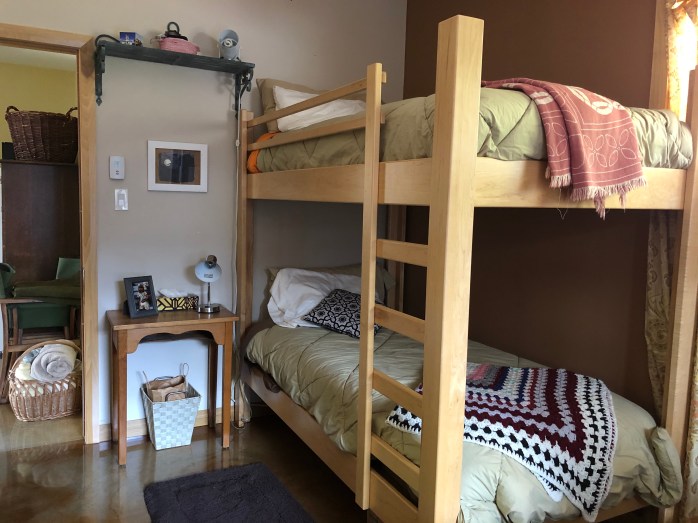
I’m wired for action. In my 60’s I became passionate about hiking. I call it my new religion. Whoa – hear me out. For me, the very nature of hiking is being in nature. Google says religion is: “the belief in and worship of a superhuman controlling power, especially a personal God or gods“. Walking in the woods – be it alone or sharing that sacred space with others – feels to me like a sanctuary, a communion with the presence of God as I understand and believe.

Hiking is restful for my soul (deep breathing, flushing monkey-mind chatter) and activates energy to push my boundaries (a tough trail). How these two can marry was revealed at an online art journalling class. Our writing prompt was, what do you think of when you hear the word boundary? No hesitation, I blurted push. Then I asked myself, why that?

Here’s a simple explanation. My personal wiring has these two things going on: it’s a challenge for me to be still – physically and mentally – and I have an abundance of energy (a term I like better than excess). Hiking offers intriguing boundaries for me to push. I welcome them for my personal growth. There you have it.

This reading list, non-fiction and memoir, has inspired my hiking passion.
- Almost Somewhere: twenty-eight days on the John Muir Trail – Suzanne Roberts
- Thirst: 2600 Miles to Home – Heather Anderson
- Vodka and Sandstorms: What is Life But one Big Adventure – Luke Richmond
- God Walk: Moving at the Speed of Your Soul – Mark Buchanan
- Honeymoon in Purda – Alison Wearing


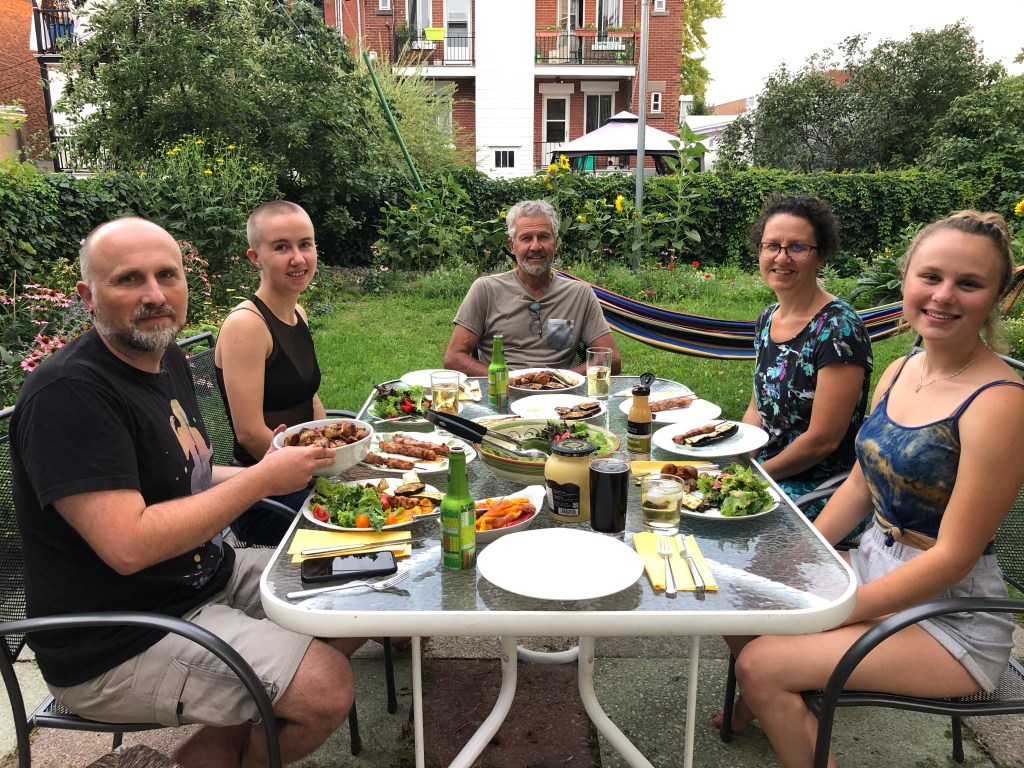
Hiking supports my whole being to feel grounded in every way. Knowing my personality tendency cards helps me ‘play the game.’
But at the end of the day (and wrapping up this post) relationships are the way and the walk of my religion.
Fellowship with God in whom I trust and rest as beloved; connecting however I can with those dearest to me; exploring the enlarging circle due to – and in spite of – Covid.
Accepting grace for who I am, and wishing that mercy will be the same for you.
Karen xo
Rescripting thoughts for “i Can help myself”
At a gathering with some high-activity friends one of the group stated “I can’t help myself!.” Have you said that too? I have. This time, an image of casually handing over control grabbed me full stop. How can I help myself is a good consideration if addicted to excessive gym workouts. And I think a critical discussion when feeling stuck, regardless of your age.
I’m fifty-five (sixty, sixty-five, sixty-seven); what kind of person do I want to be now in this stage of life? What dreams and adventures call my name? I’ve never tried anything like this before.
Clearly we have limitations. I would love to heft my sea kayak onto the car rack, using saw horses or some other leveraging system I can dream up. But it’s pretty certain on this one: I can’t do it by myself. There’s a high risk of damaging my body and vehicle if I do.
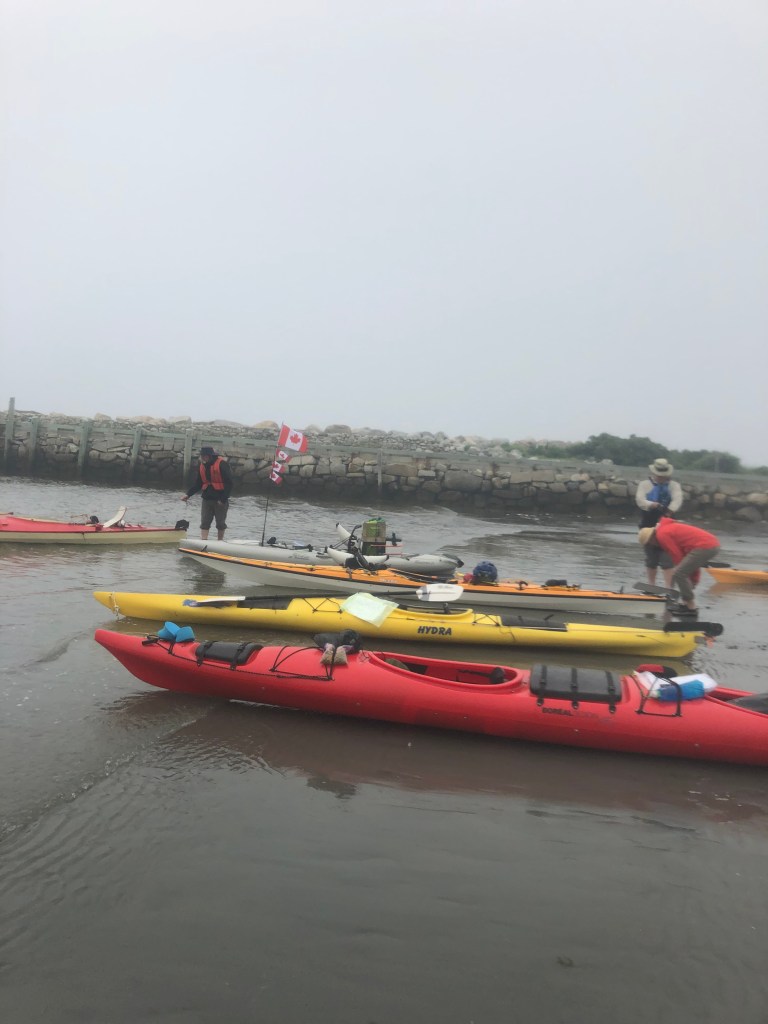

Other than physical limitations what are the ways we get stuck ? I’ve listed three reasons.
#One. Our thoughts, and our belief that they are true. Thoughts. They are sentences of words that come into our mind. That doesn’t mean they’re true. Has anyone else misinterpreted something, then built a thought in your mind that someone doesn’t like you, is against you: based only on your thought evaluation?
#Two. Change. Answers to questions like ‘what’s next for me’ will probably mean doing something differently. Developing new self care practices, shifting attitudes, reaching for dreams – do I hear ‘yikes’?!
#3Three. Fear. Stepping out of our box. Knowing what to do first. Anxiety how to respond to family and peers who may question our new actions and ideas. What-if’s. It can be intimidating just to start.
Three tools that have helped me to rescript my thoughts, dare to dream, and take action.
#1 Make a mindmap: this is something new in my toolbox and I love it. Daphne from the Publication Coach showed me how to use mindmaps for writing. Now I use them for everything: to get started on a blog post, process a work decision, organize my next back-packing trip, approach a sticky situation.This is how I do it:
- get an 8×11 sheet of paper and position it on a writing space landscape-style
- draw a circle in the middle of the paper. Inside the circle write a question. From that middle circle draw spokes out to other circles for responses triggered by that question. This can be a short exercise, 3-7 minutes tops, jotting thoughts down as they come. There isn’t a right or wrong way. It’s getting thoughts out of the head for the vantage point of seeing them and working with them.
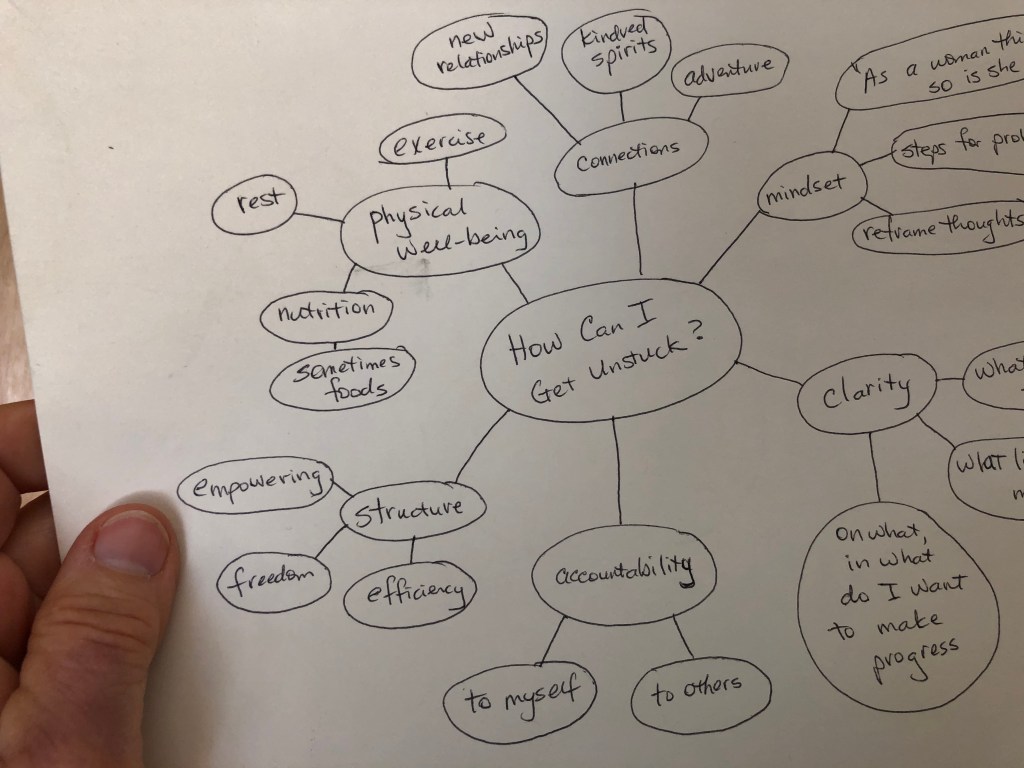
- If this tool is new to you, I encourage you to test it out, perhaps related to our topic with a question, i.e. what makes my heart sing, or – what stops me from trying new things? Daphne’s website offers a download for her mindmapping instructions. If you’d like to contact me here I’d be happy to do one together.
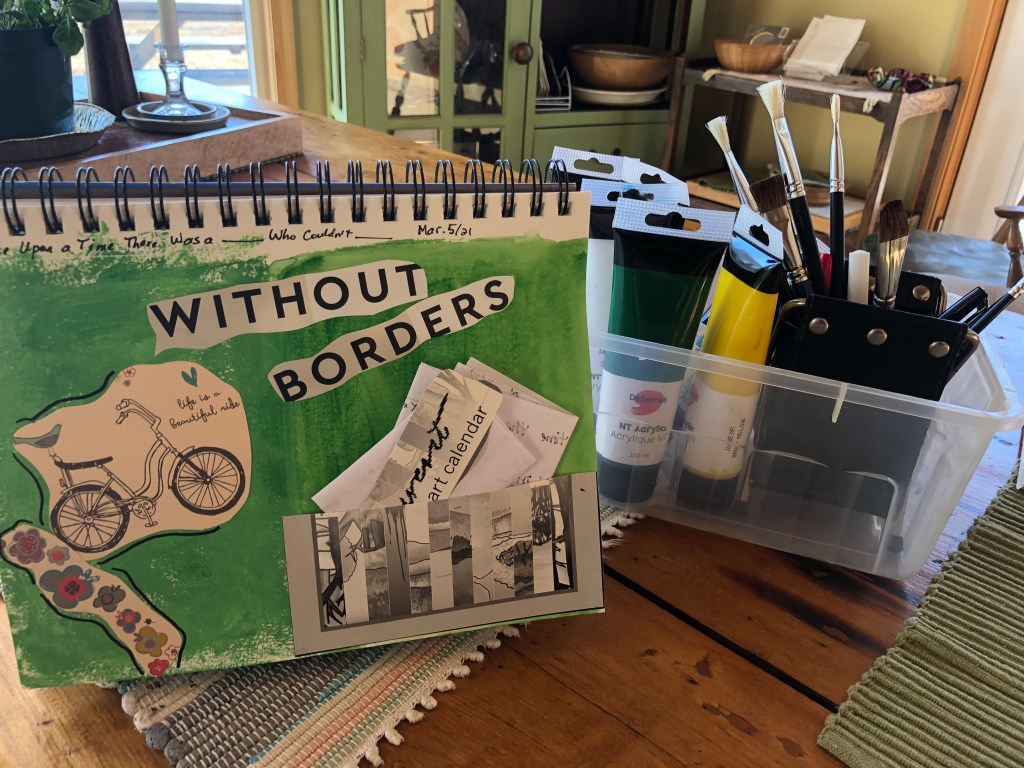
#2 Be mindful about what is taken in through all the senses. What we read, see, listen to becomes part of what we think and believe. This message bears highlighting, especially in our current world situation with so much input blasting via every medium. Author Dr. Caroline Leaf, whose work on and off the page marries both spiritual and scientific wisdom, writes this “….what we say and do is based on what we have already built into our minds {based on implanted thoughts that form our point of view}. We evaluate this information and make our choices based on this information, then we choose a new thought, and this is what drives what we say or do.” 1.
#3 Make small doable goals. The temptation is to tackle the world and that’s a set-up for self-sabotage. This is old news but still relevant news: remember the hare and tortoise!

Friends, it feels easier sometimes to sit in the rut or behind the tree. Chilling out: believing we can wait a while (folks, time is a limited commodity) or that we can’t help ourselves.
Change is hard work. And there isn’t a formula to rescript your life because your life, with its dreams and goals, is one of a kind. If you’d like to connect for support on moving forward, reach out here.
Love, until next time …
Karen
- p. 42 Switch on Your Brain


